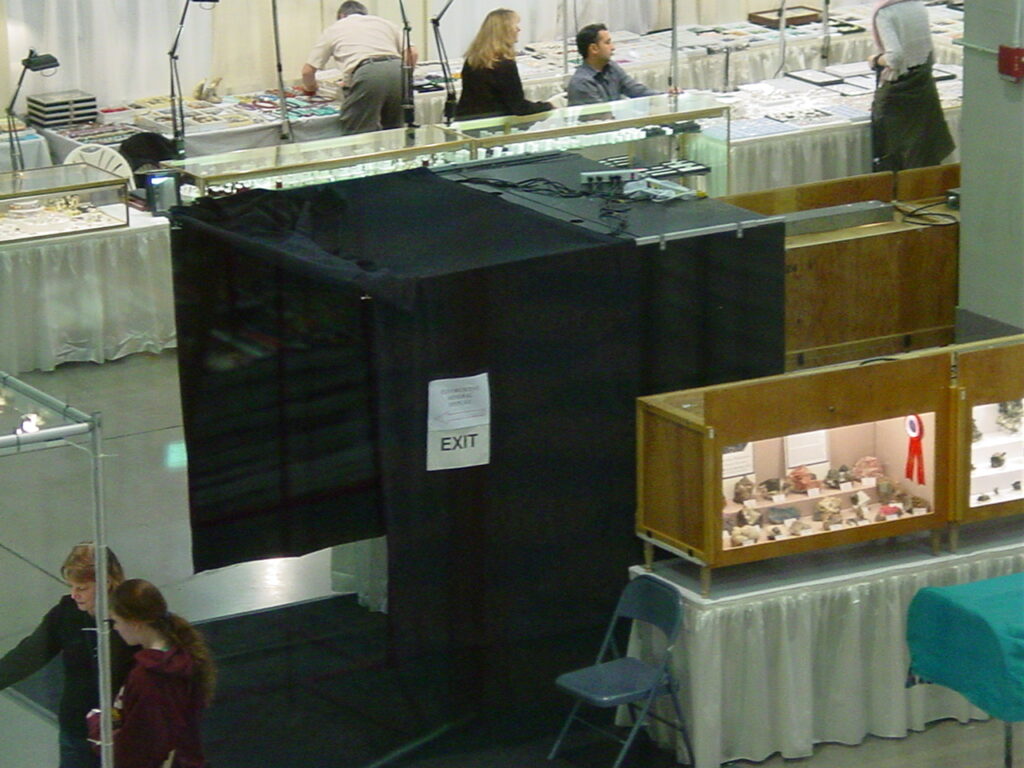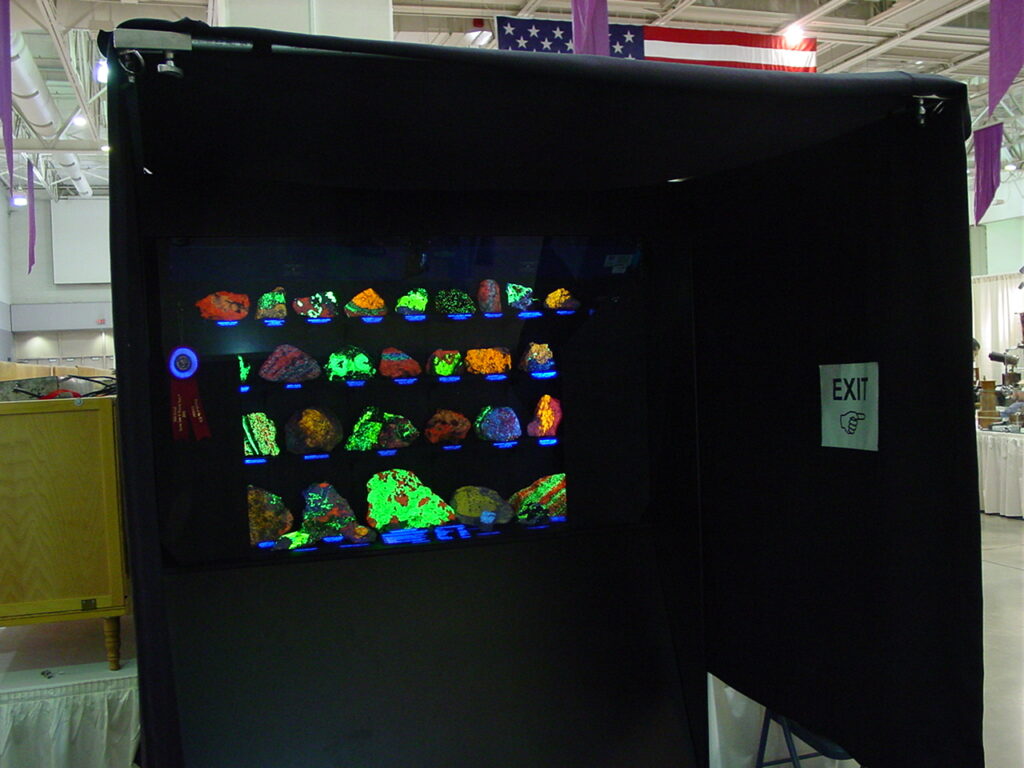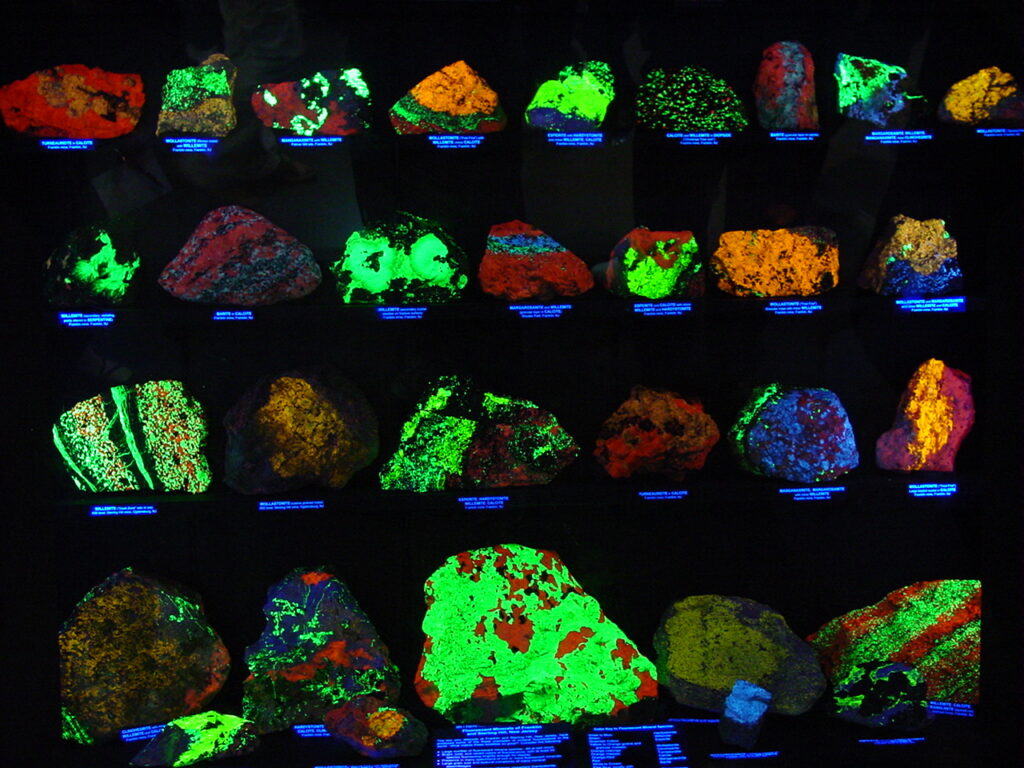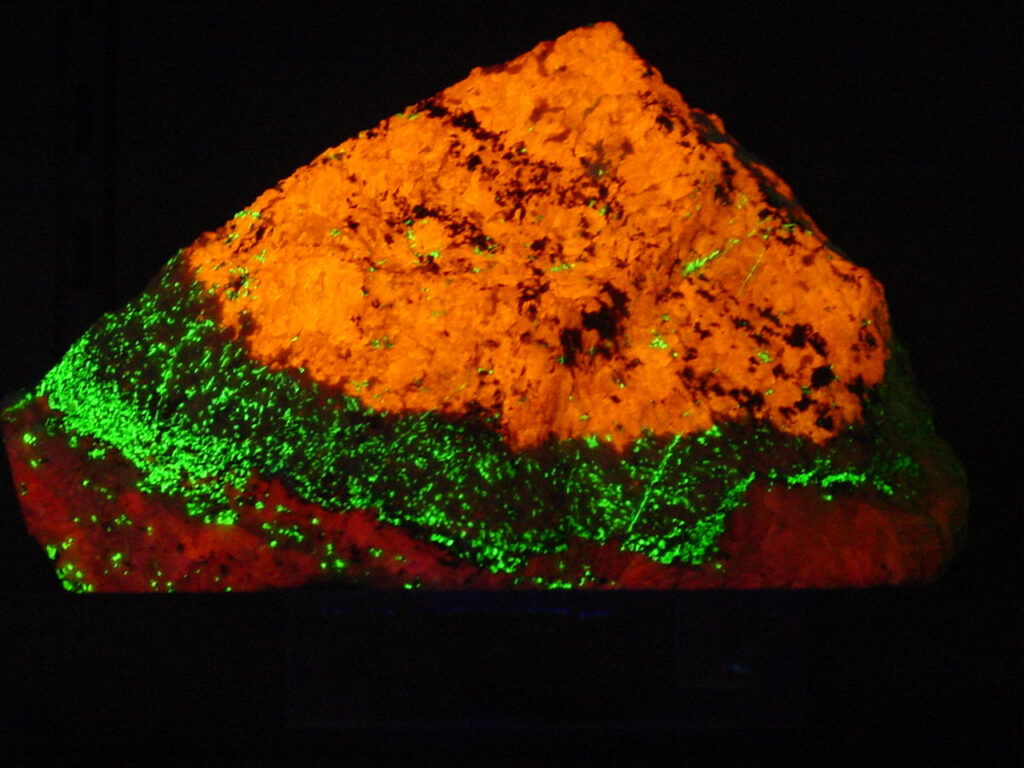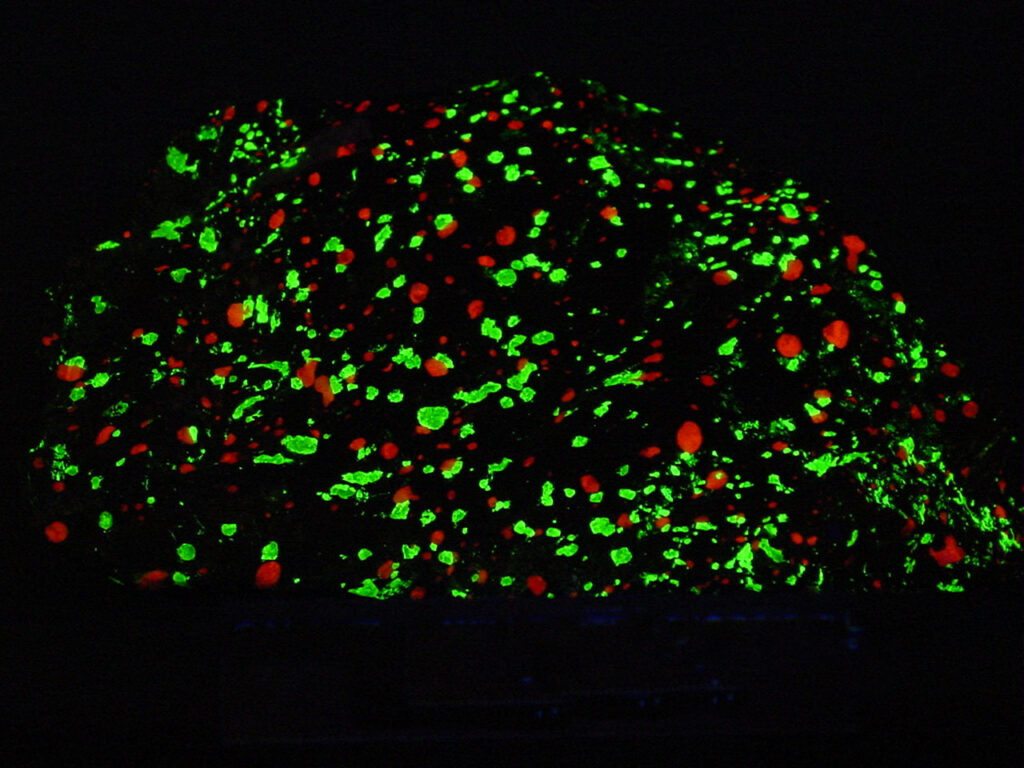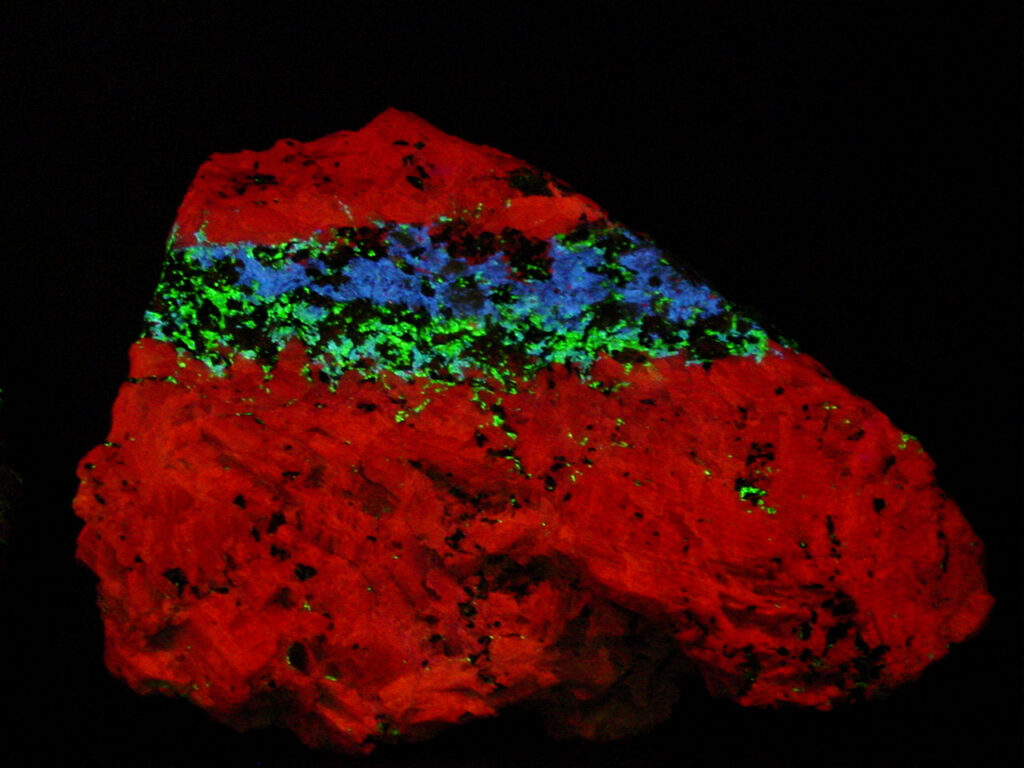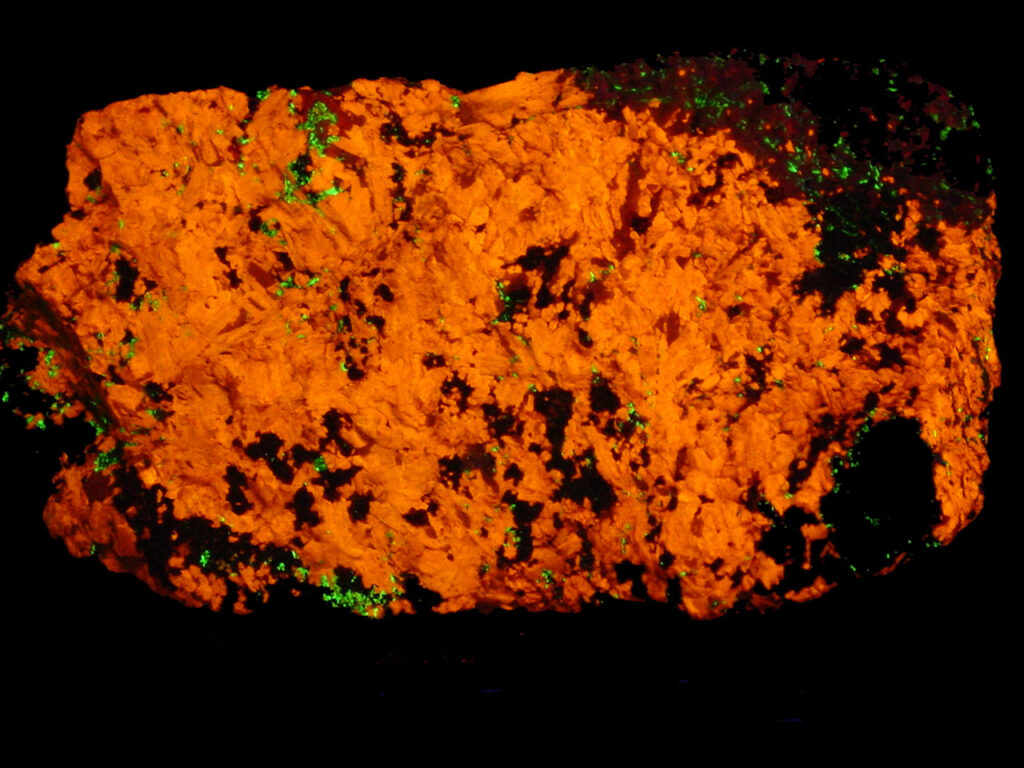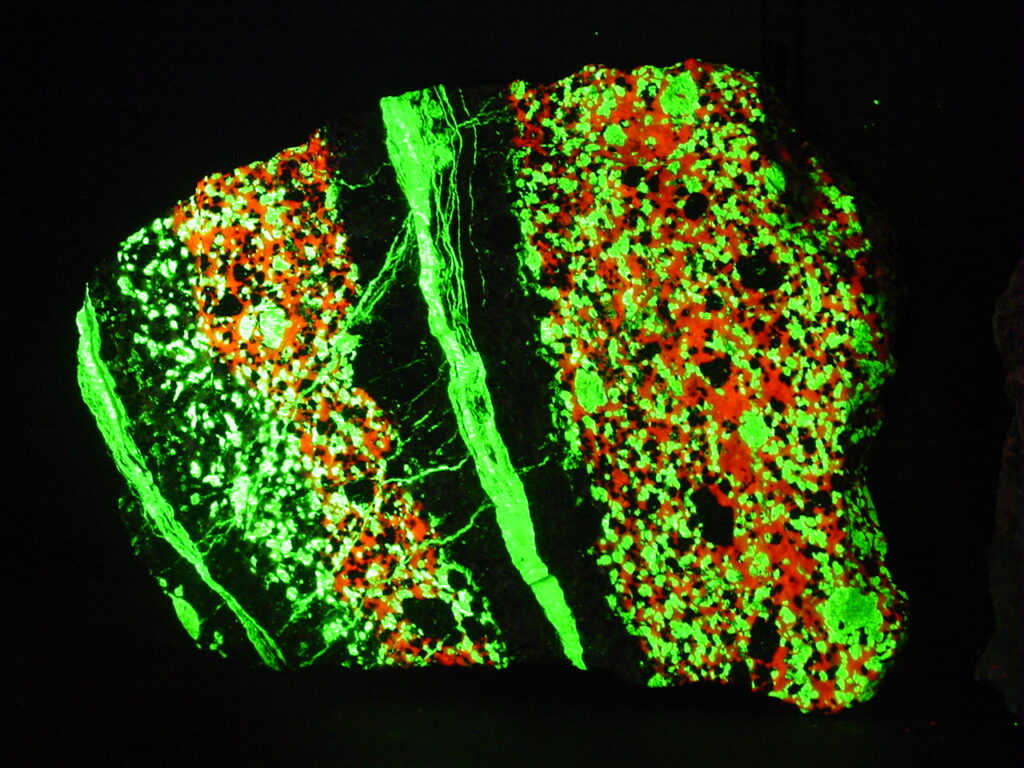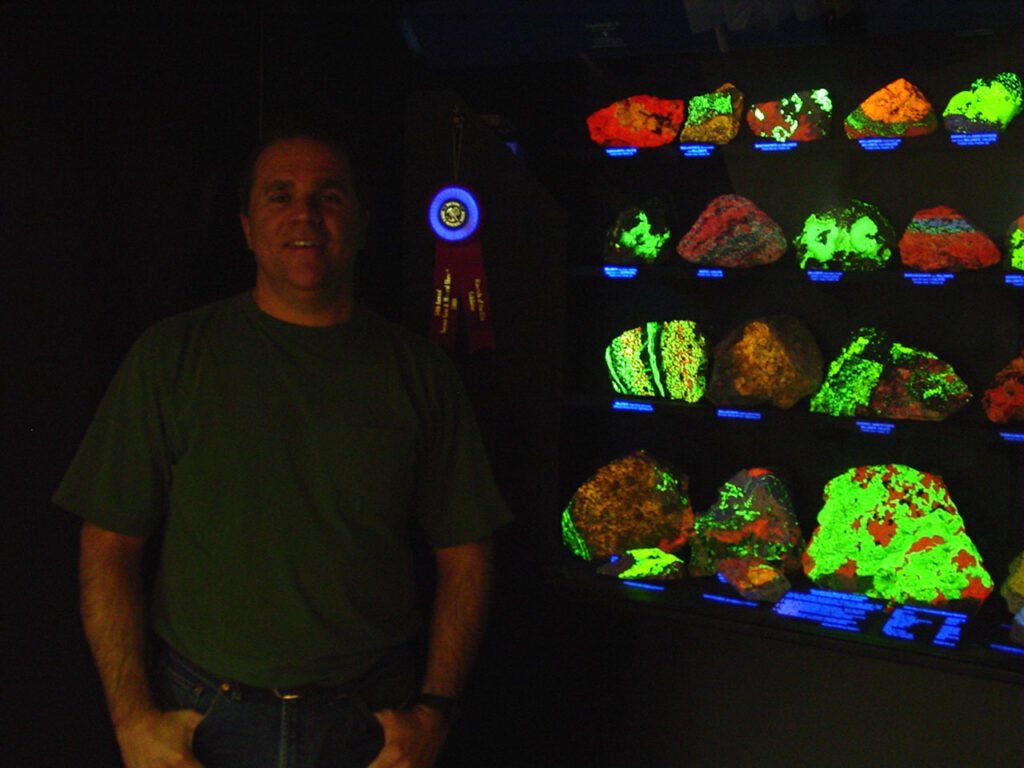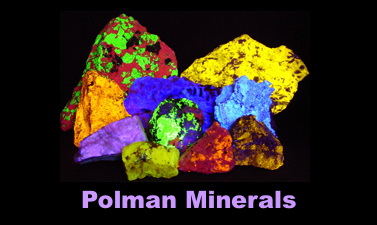Tucson Gem and Mineral Show – February 10-13, 2022
One of the themes for this year’s Tucson show was Fluorescent Minerals. To celebrate the 50th anniversary of the Fluorescent Mineral Society (FMS), the Tucson Gem and Mineral Society (TGMS) decided to invite the FMS to display over 60 cases of fluorescent minerals in a new hall adjacent to the main hall of the show.
Al Liebetrau volunteered over 3 years ago to take on the undaunting task of organizing and coordinating this exhibit. In the end, the exhibit was amazing! Kudos to Al and everyone else who played a role in putting this exhibit together (too many people to mention them all). Thanks also goes to the TGMS and mostly Les Presmyk, who pushed to have a special fluorescent mineral exhibit for the FMS 50-year anniversary.
Originally, I had planned on exhibiting three cases of fluorescent minerals from my collection. Over time, knowing the time constraints of being a dealer at the show, I had decided on just providing one case. I chose to do a case of esperite specimens from the Franklin Mine in New Jersey.
The set-up of this exhibit began early in the week as tables, display cases and lamps were moved into the new hall. Many volunteers helped with dressing the cases with specifically designed shelving and liners. On February 9, the exhibitors were allowed to begin their set-up at 1:00. Below are a couple of photographs of the set-up and then just a few of the over 60 display cases as part of this exhibit
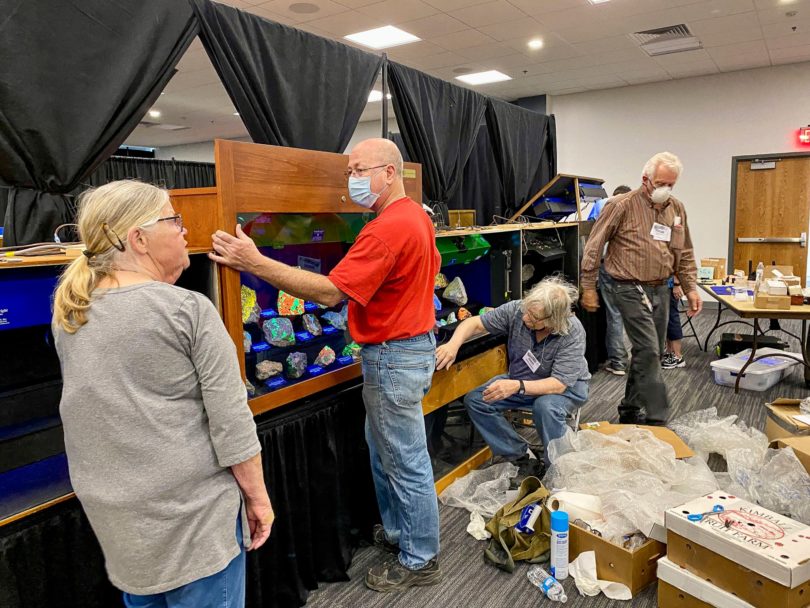


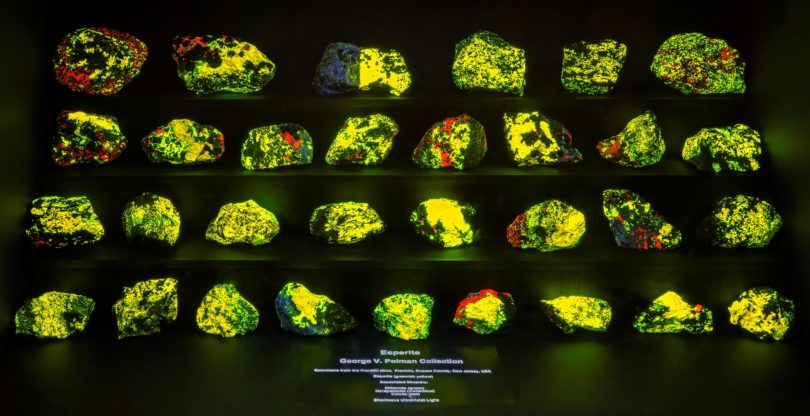
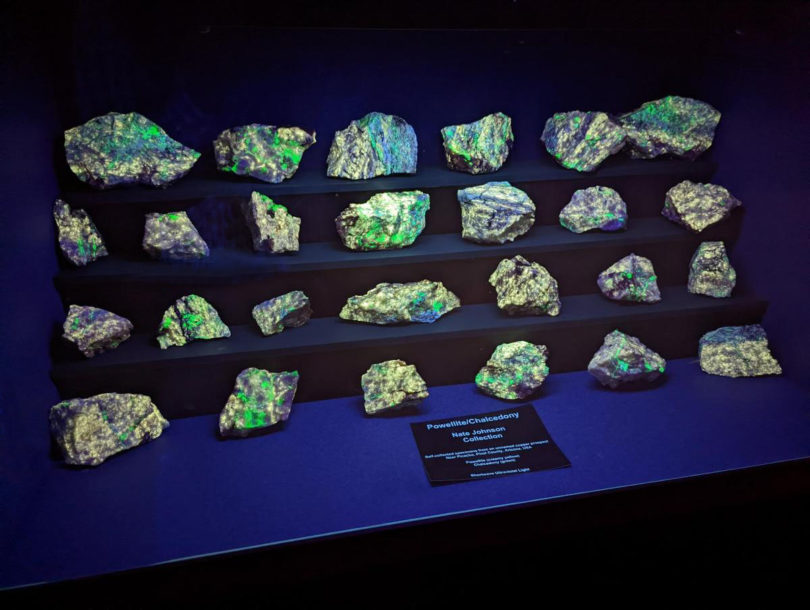
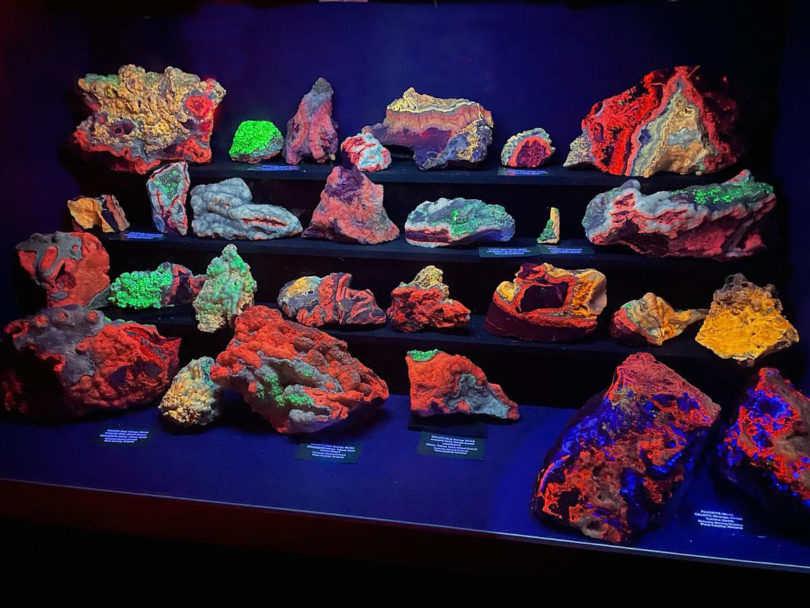
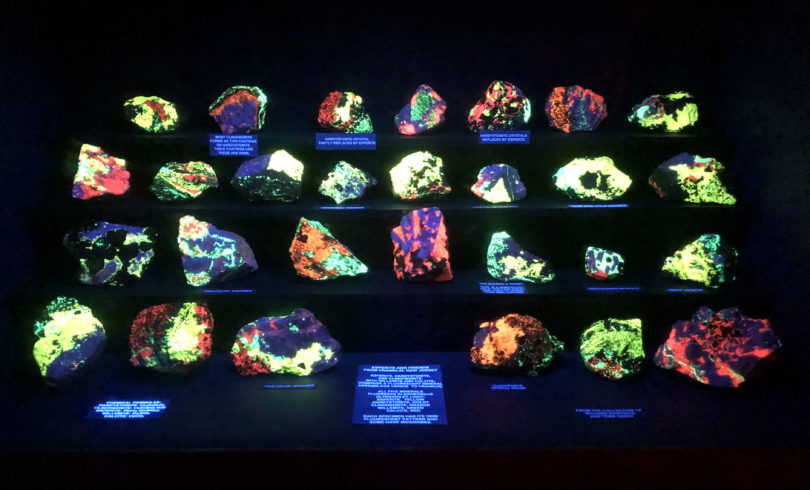
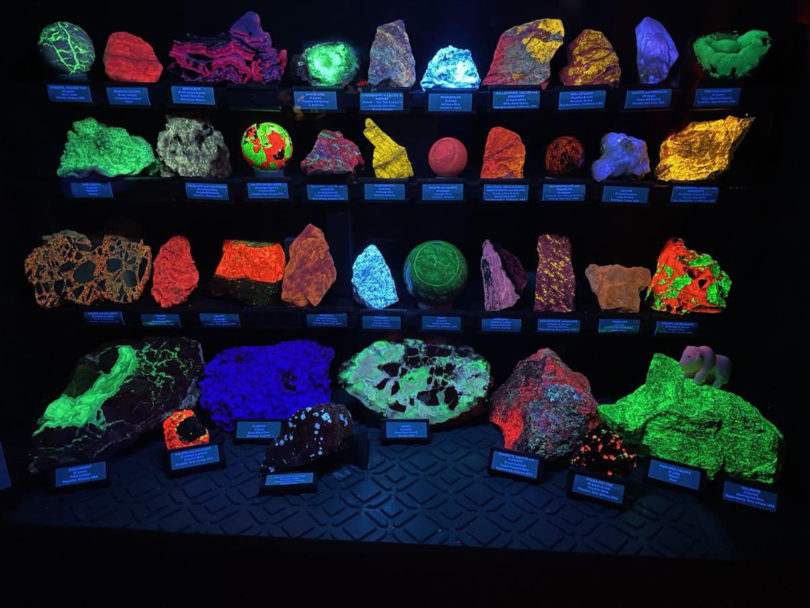
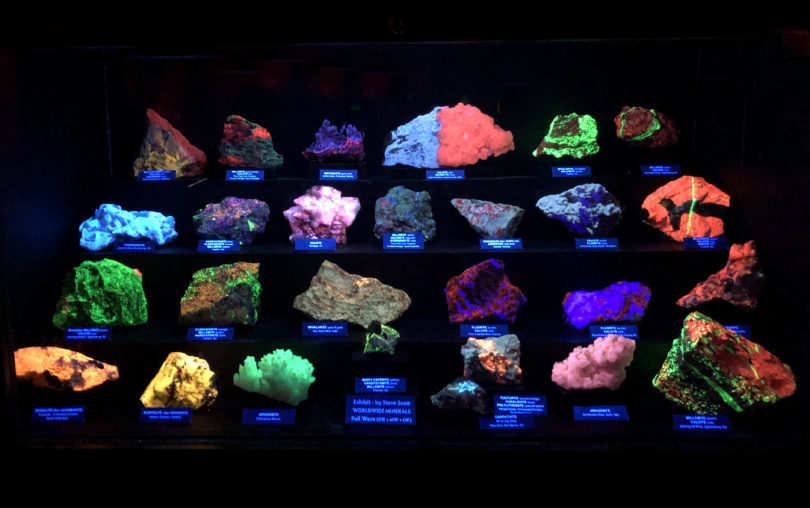
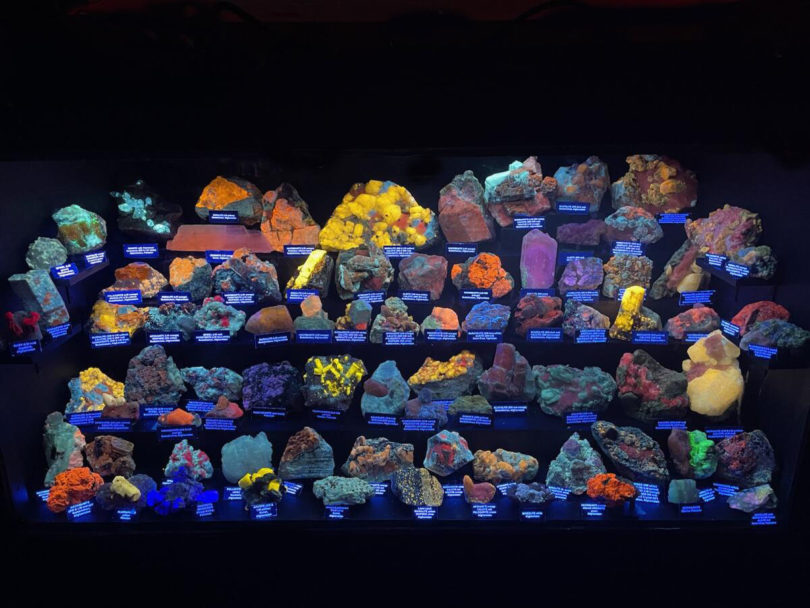
In conjunction with the 2022 Tucson Gem and Mineral Show, the University of Arizona organized a grand opening ceremony for the new University of Arizona Alfie Norville Gem and Mineral Museum. As a member of the consulting team for this museum, Debbie and I were invited to attend. It was a first-class event, and Debbie and I had a wonderful evening. The event was catered with wonderful food and drink. A Mariachi band performed as well. When all the speakers were finished, the invited guests had open access to the museum for the rest of the evening.
The next time you are in Tucson, I hope you will visit this wonderful new mineral museum. Click here for more information.







Tucson Gem and Mineral Show - February 14-17, 2019
In September of 2019 I was asked by Conrad North, the President of the Fluorescent Mineral Society, if I would do another display at the Tucson Gem and Mineral Show (Tucson Show). Since I took a break and did not do one in 2018, I told Conrad that I would do it. In 2017 I did a case that consisted of all sphalerite specimens from the Horn Silver Mine (see below). I try to do displays of specimens that are a bit out of the norm, giving people a chance to see specimens they might not otherwise see. At the Tucson Show you have both the casual observer as well as the serious fluorescent mineral collector.
A few years back when I was considering my options for displays, one thought I had was a display of just wollastonite specimens. Since the theme for the 2019 Tucson Show was “Wulfenite is Loved”, I thought I would match the colors of wulfenite by doing a wollastonite, wollastonite/calcite case (yellow, orange and red). My good friend Nate Johnson and I spent a whole Saturday going through my collection in order to come up with specimens that would fit the bill for this display. For instance, when coming up with “Third-Find” wollastonite specimens from Franklin, New Jersey, I needed specimens that did not contain barite. With specimens of wollastonite or wollastonite/calcite from the White Knob Quarry in California, I needed specimens that had very little aragonite. Knowing I needed about 35 display size specimens, we were happy we found all we needed.
The specimens all fit into seven specific names and localities, so I only needed a key that included just seven numbers. Each specimen in the display was given a number from 1-7 and the key was located toward the front of the case. I am a firm believer that having a label for each specimen detracts from the aesthetics of the case.
A couple weeks prior to doing the display I was contacted by Jan Wittenberg. Jan, who normally helps me install the lamps etc., was unable to help me this year due to some prior commitments. I contacted Conrad, and he told me that he and Sandy would be able to help. As I have said in previous articles, this display set-up is at least a two-person job. On Wednesday February 13, 2019, Conrad, Sandy and I set up the display. After about 5 hours it was completed.
The display was a success again this year, with many people viewing it throughout the 4-day show. I had several people tell me that it was nice to see some different colors in the display and they enjoyed it very much. I love to watch and hear the kids reaction when they walk into the display! While I was attending the show, I tried to stop into the display from time to time to answer questions regarding the specimens.
After the show was over, I got some much-needed help to break down the display from my good friend David Giebelstein. My wife Deborah was able to get a nice photograph of the display for me. I think it is important to continue putting in world class displays at the Tucson Show. These displays go a long way in getting more and more people interested in the hobby.

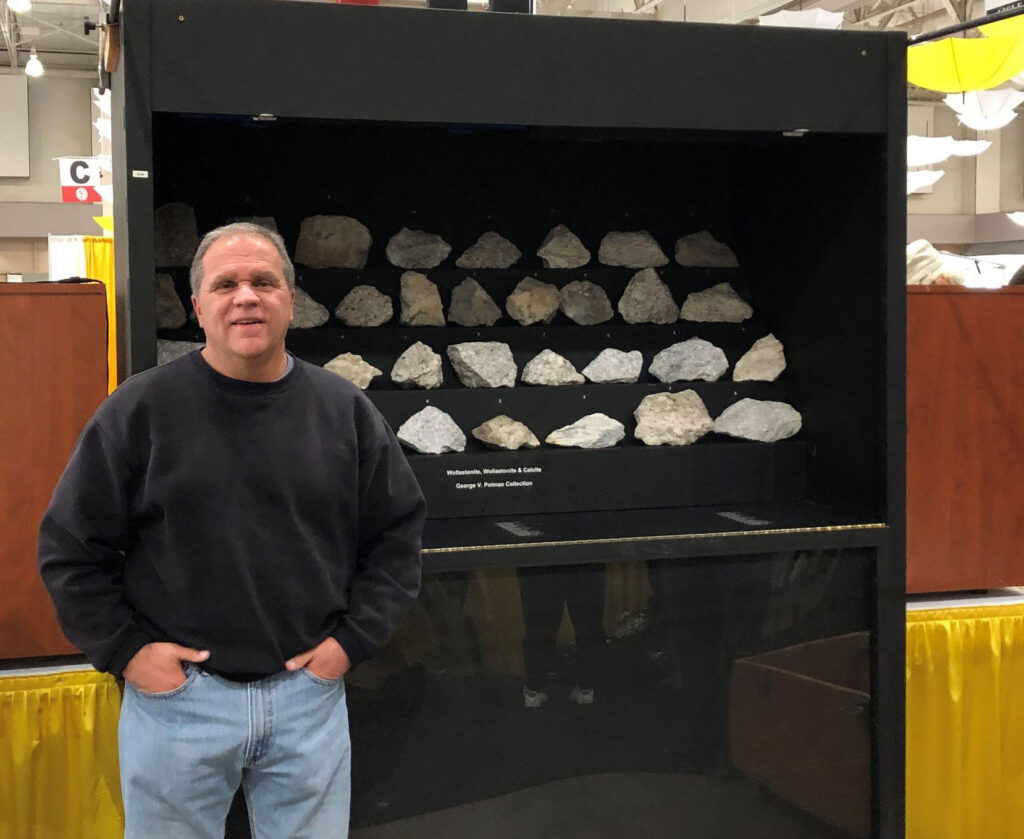
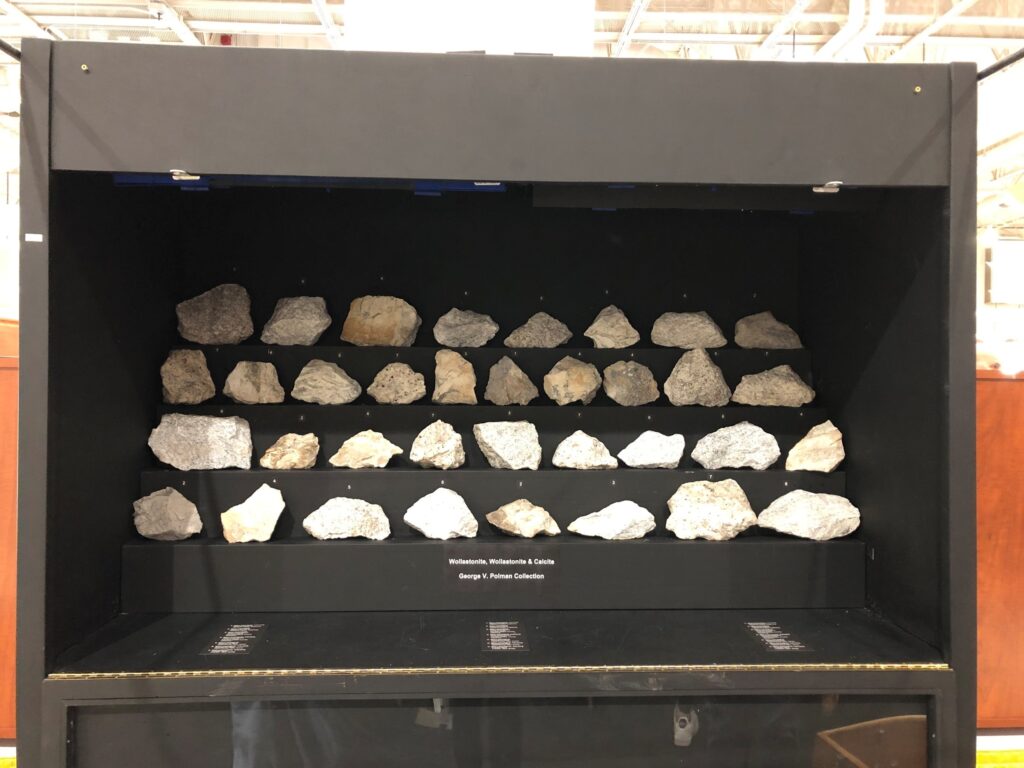
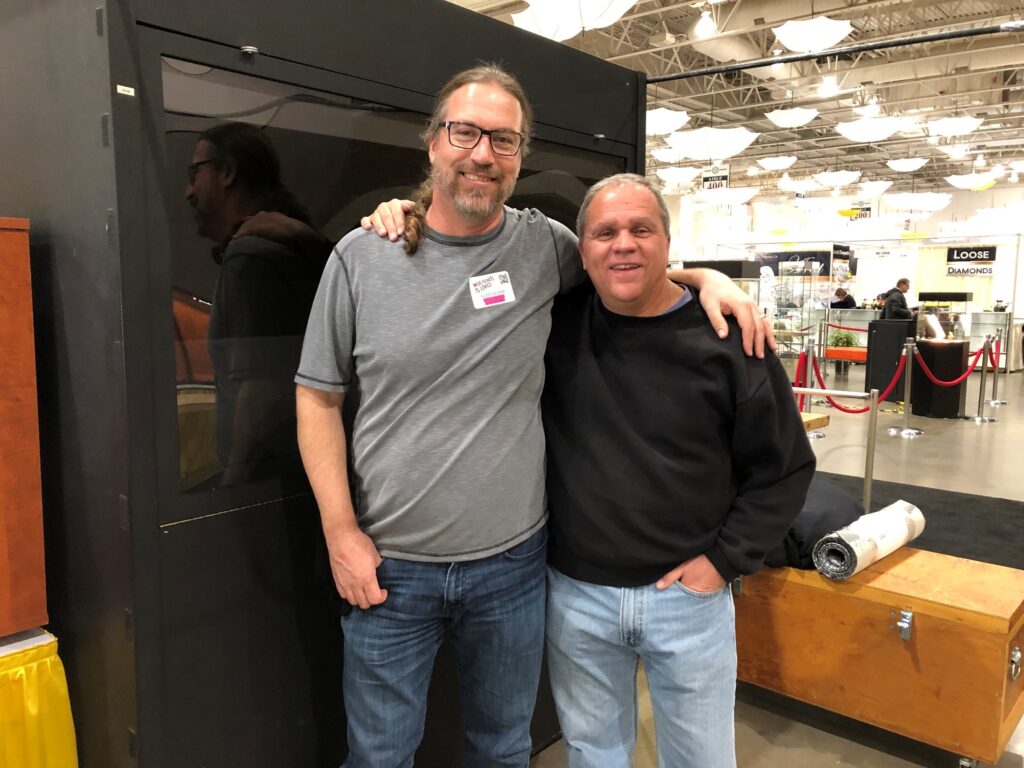
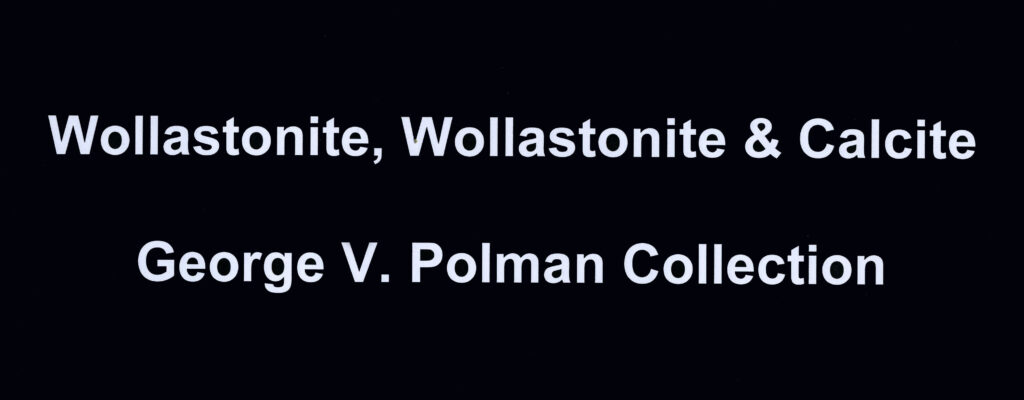
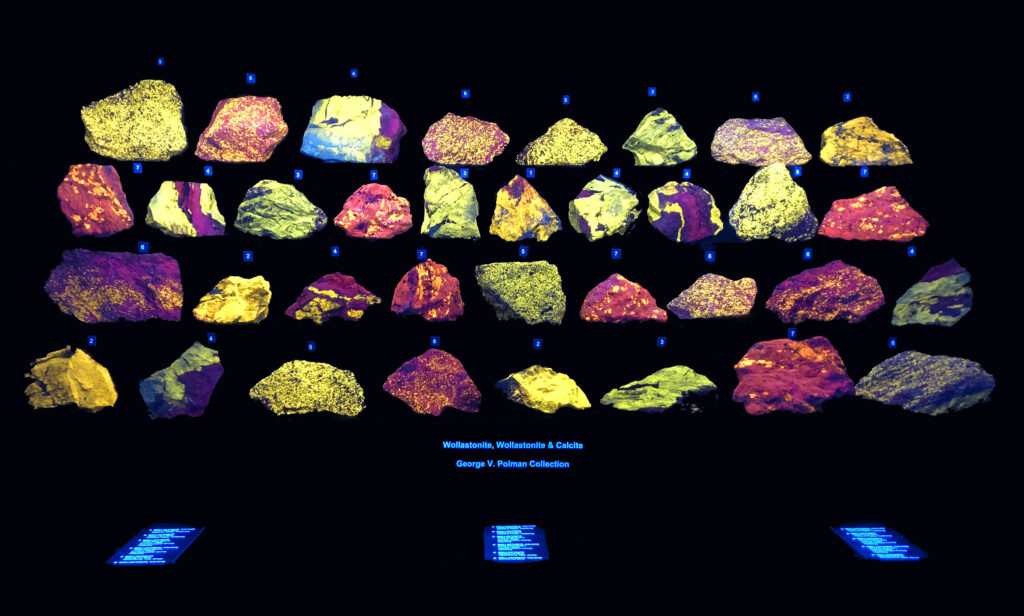
The completed display for Tucson-2019. The “theme” for the display was wollastonite, wollastonite/calcite. Information about each of the specimens in the display is provided below.
Photograph by Deborah S. Polman.
TOP ROW FROM LEFT TO RIGHT
Wollastonite – Sterling Hill Mine, Ogdensburg, New Jersey.
Wollastonite, Calcite – Sterling Hill Mine, Ogdensburg, New Jersey.
Wollastonite, Calcite – White Knob Quarry, Lucerne Valley, San Bernardino County, California.
Wollastonite, Calcite – Sterling Hill Mine, Ogdensburg, New Jersey.
Wollastonite – Sterling Hill Mine, Ogdensburg, New Jersey.
Wollastonite – White Knob Quarry, Lucerne Valley, San Bernardino County, California.
Wollastonite, Calcite – Sterling Hill Mine, Ogdensburg, New Jersey.
Wollastonite – Desert View Mine, Holcomb Valley, California.
SECOND ROW FROM LEFT TO RIGHT
Wollastonite, Calcite – Franklin Mine, Franklin, New Jersey.
Wollastonite, Calcite – White Knob Quarry, Lucerne Valley, San Bernardino County, California.
Wollastonite – White Knob Quarry, Lucerne Valley, San Bernardino County, California.
Wollastonite, Calcite – Franklin Mine, Franklin, New Jersey.
Wollastonite – White Knob Quarry, Lucerne Valley, San Bernardino County, California.
Wollastonite, Calcite – Desert View Mine, Holcomb Valley, California.
Wollastonite, Calcite – White Knob Quarry, Lucerne Valley, San Bernardino County, California.
Wollastonite, Calcite – White Knob Quarry, Lucerne Valley, San Bernardino County, California.
Wollastonite – Sterling Hill Mine, Ogdensburg, New Jersey.
Wollastonite, Calcite – Franklin Mine, Franklin, New Jersey.
THIRD ROW FROM LEFT TO RIGHT
Wollastonite, Calcite – Sterling Hill Mine, Ogdensburg, New Jersey.
Wollastonite – Desert View Mine, Holcomb Valley, California.
Wollastonite, Calcite – White Knob Quarry, Lucerne Valley, San Bernardino County, California.
Wollastonite, Calcite – Franklin Mine, Franklin, New Jersey.
Wollastonite – Sterling Hill Mine, Ogdensburg, New Jersey.
Wollastonite, Calcite – Franklin Mine, Franklin, New Jersey.
Wollastonite, Calcite – Sterling Hill Mine, Ogdensburg, New Jersey.
Wollastonite, Calcite – Sterling Hill Mine, Ogdensburg, New Jersey.
Wollastonite, Calcite – White Knob Quarry, Lucerne Valley, San Bernardino County, California.
BOTTOM ROW FROM LEFT TO RIGHT
Wollastonite – Desert View Mine, Holcomb Valley, California.
Wollastonite, Calcite – White Knob Quarry, Lucerne Valley, San Bernardino County, California.
Wollastonite – Sterling Hill Mine, Ogdensburg, New Jersey.
Wollastonite, Calcite – Sterling Hill Mine, Ogdensburg, New Jersey.
Wollastonite – Desert View Mine, Holcomb Valley, California.
Wollastonite – White Knob Quarry, Lucerne Valley, San Bernardino County, California.
Wollastonite, Calcite – Franklin Mine, Franklin, New Jersey.
Wollastonite, Calcite – Sterling Hill Mine, Ogdensburg, New Jersey.
Tucson Gem and Mineral Show - February 9-12, 2017
All photographs are copyright 2017. However, if you would like a copy of any photograph
below, I have higher quality digital images available. Please email me.
A few months prior to the 2017 Tucson Gem and Mineral Show I volunteered to put in another fluorescent mineral display in the Fluorescent Mineral Society (FMS) Tucson display case. This year I decided to do a case with nothing in it but sphalerite specimens from the Horn Silver Mine in Utah. With the wide variety of colors that this particular sphalerite fluoresces, I thought it would be an interesting and educational case for the public (and serious collectors alike). Some specimens of sphalerite from the Horn Silver Mine do have fluorescent red calcite as well, adding yet another color to these wonderful specimens. However, I decided to use only specimens that had sphalerite only, thus requiring just longwave ultraviolet light for the case.
The story behind the recovery of these fantastic specimens was so incredible, that I wrote up the history of the mine, and the history of how they were collected. Prior to purchasing this collection, I did promise the collector that I would display the specimens for people to see, and that I would explain the time and hard work involved in recovering these specimens.
Once again, my good friend Jan Wittenberg was able to help me with the setup of the display. Due to the size of the new case, the work involved with the setup and the limited time we are given, it seems to be a two-person job for sure.
The display was a success again this year, with many people viewing it throughout the 4-day show. My only regret was that I wished we had more UV in the case. The four lamps we had just did not seem to provide enough wattage to really make the sphalerite “pop”. I will be in discussions with the Tucson Gem and Mineral Society as well as the Tucson Fire Marshals office in May to see if I can get some other lamps approved for use in the case. With the addition of some more powerful lamps, we will not be limited to just displaying extremely bright specimens like those of the Franklin or Sterling Hill mines.
While I was attending the show, I tried to stop into the display from time to time to answer any questions regarding the specimens. I even brought with me a 405nm laser and would shine it on the specimens through the OP-3 acrylic. It was fun seeing the look on the kids eyes as I would write my initials on the specimens using the phosphorescent response of the sphalerite. Quite fun for the kids (and me as well)!
After the show was over, I got some much needed help to break down the display from my good friends Mike Sawicki and Nate Johnson. I was also able to get a nice picture of the display before it was taken down. If anyone is interested in learning more about these incredible specimens and how they were recovered, you can read the history on the Horn Silver Mine Showcase page of my website.
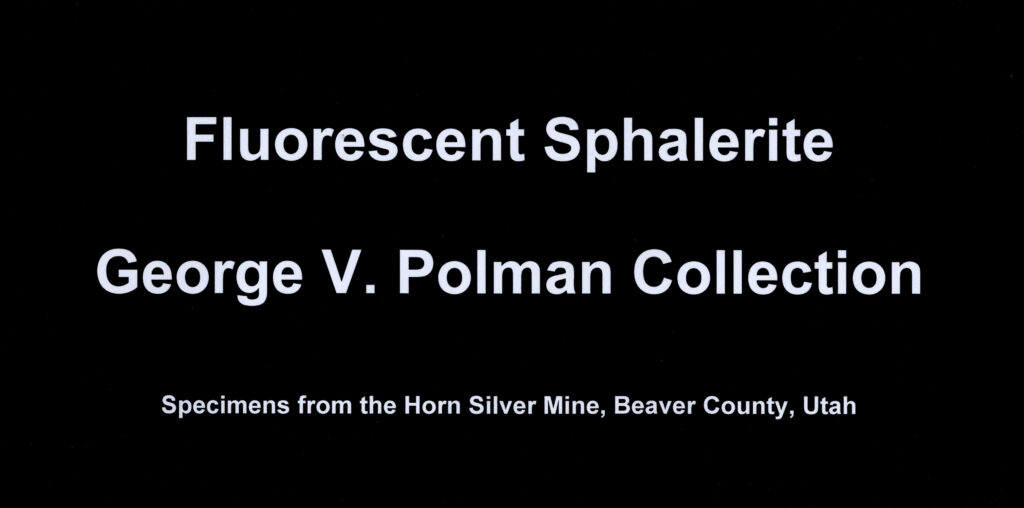
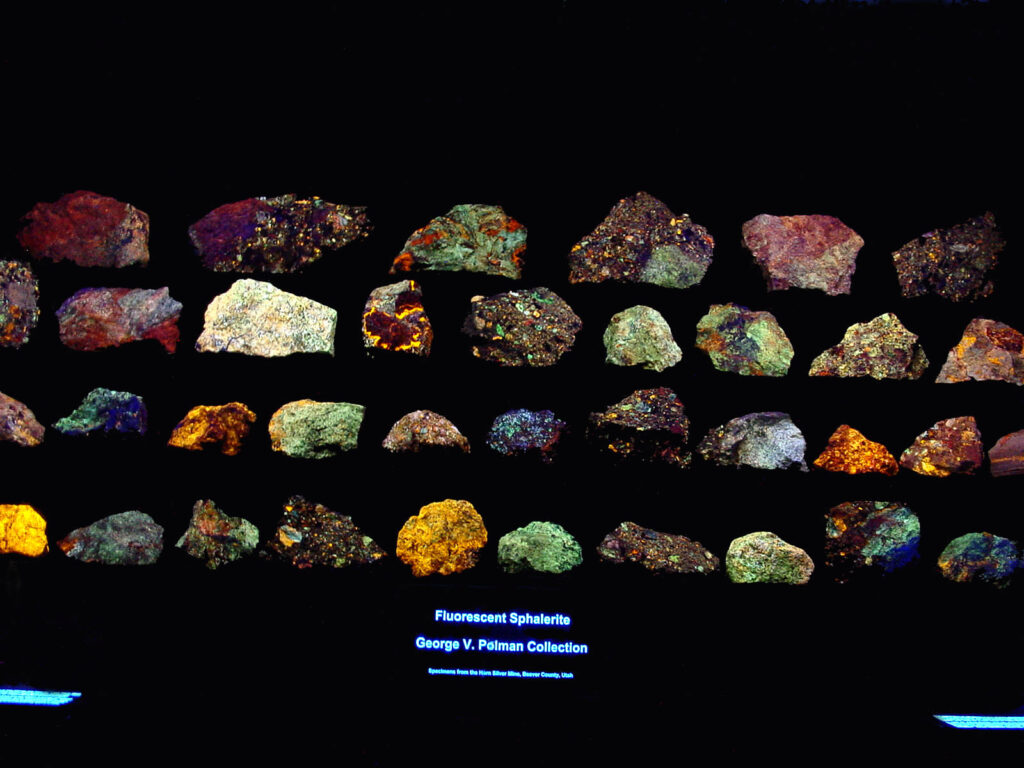
The completed display for Tucson-2017. The “theme” for the display was sphalerite from the Horn Silver Mine in Utah. The specimens were chosen to show the variety of color and pattern. Information regarding the history of the mine and the specimen recovery was provided in the case.
Photograph by George V. Polman.
Tucson Gem and Mineral Show - February 11-14, 2016
All photographs are copyright 2016. However, if you would like a copy of any photograph
below, I have higher quality digital images available. Please email me.
In 2015, Dr. Kerry Cooper and I volunteered to put in a fluorescent mineral display within the Fluorescent Mineral Society (FMS) case at the Tucson Convention Center. We both received many compliments on the case, and I thought it was very good advertising for the FMS. After last year’s show, I contacted Conrad North, President of the FMS, and told him that if he couldn’t get anyone to volunteer to put in a case for 2016, that I would be happy to do it again.
After several emails back and forth during 2015, I got the go ahead to do the case, and provided Conrad with a few options for what I could display. After some discussion, I decided to put in a case of nothing but willemite and calcite specimens from both the Franklin Mine and Sterling Hill Mine in New Jersey. I decided to include all the various types of “red and green” from the two mines, and provided an educational description of each. The types of specimens included pattern pieces, vein pieces, mylonitic ore, exsolution willemite, polka dot ore, Christmas tree ore and shot ore. The information that was provided in the case about each of the types is provided below. I knew the case would provide the “WOW” factor for those seeing fluorescent minerals for the first time, as well as educational information for those people who have been involved with the hobby for a long time.
Putting in that display is at least a two person job, so I contacted my good friend Jan Wittenberg to see if he could help me again this year. Jan offered to help, and we began to make plans to do the display. We both agreed that the case needed a few improvements over last year. Most importantly, we decided to add about 12 more inches of black fabric to the bottom of the curtain. This provided a much needed barrier to the ambient light in the hall. We also had success in obtaining a black piece of carpet to put on the floor within the display, thus stopping any light reflection off the polished concrete floor. Lastly, we were able to get the Tucson Gem and Mineral Society to provide us with a couple of signs, indicating that the FMS was the sponsor of the display.
The display was a success again this year, with many people viewing it throughout the 4 day show. I received many compliments on the case. Compliments were from people who had never seen fluorescent minerals before, as well as from people who are very well known in the hobby. After the show was over, I got some much needed help to break down the display from another good friend David Giebelstein and my wife Deborah. With their help the break down was a lot quicker than the set up!
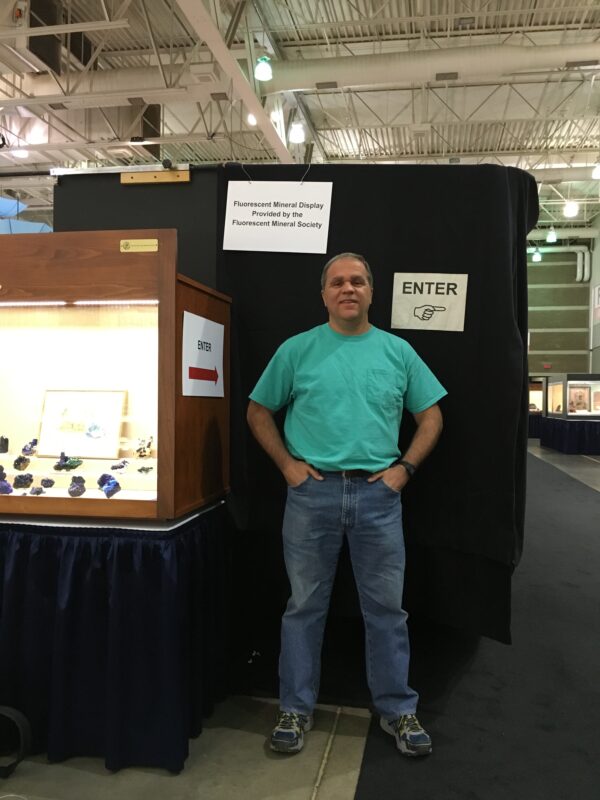
George Polman in front of the FMS display case. Note the new length of black curtain and the new signs provided by the TGMS. Photograph by Deborah S. Polman.
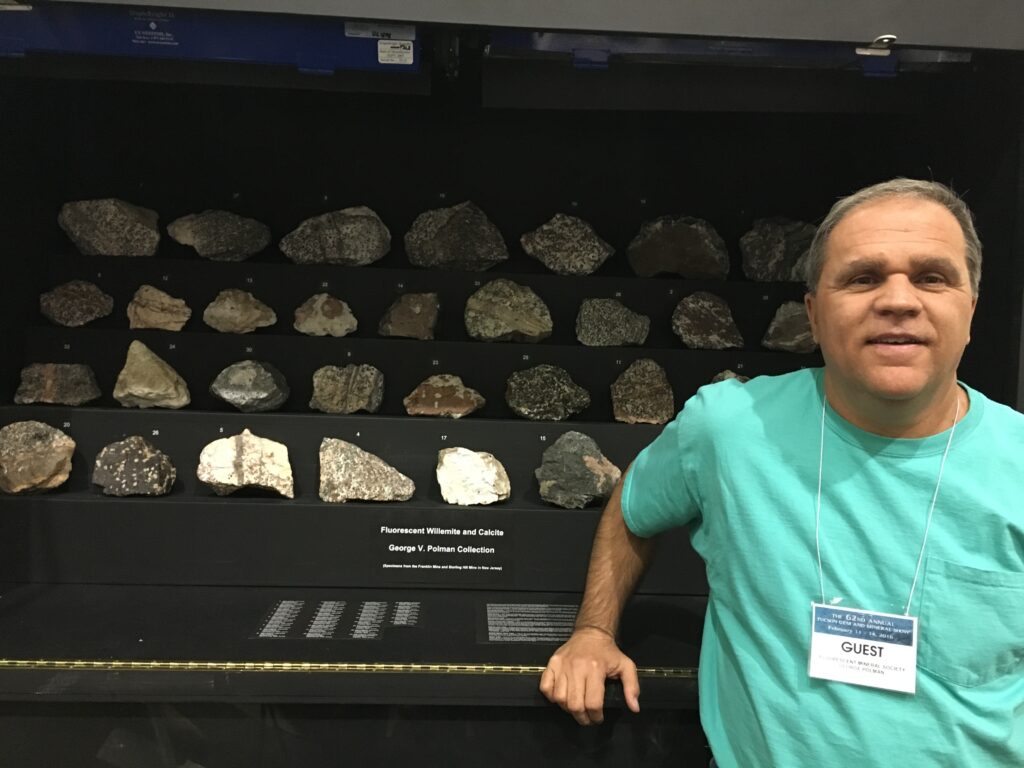
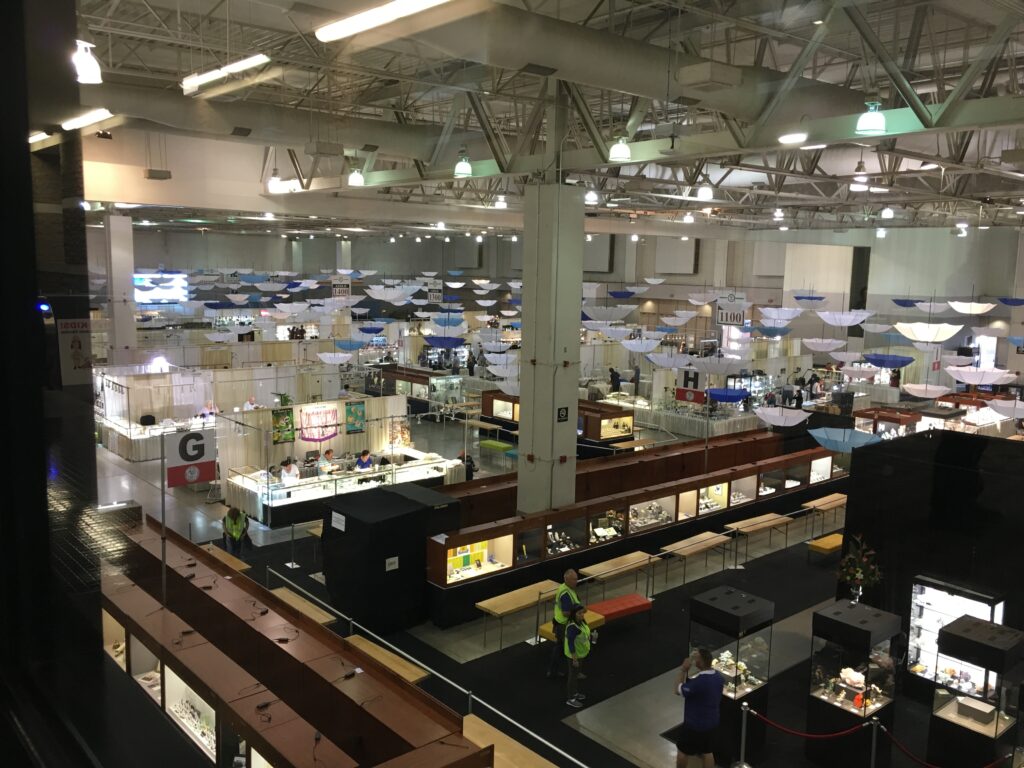

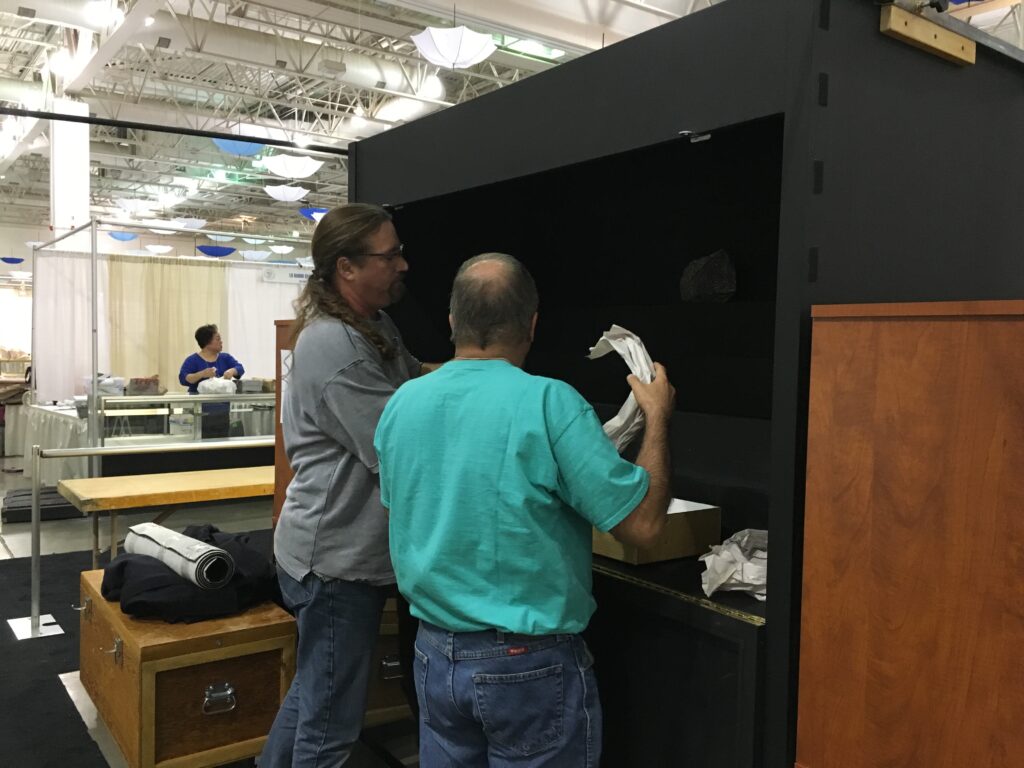
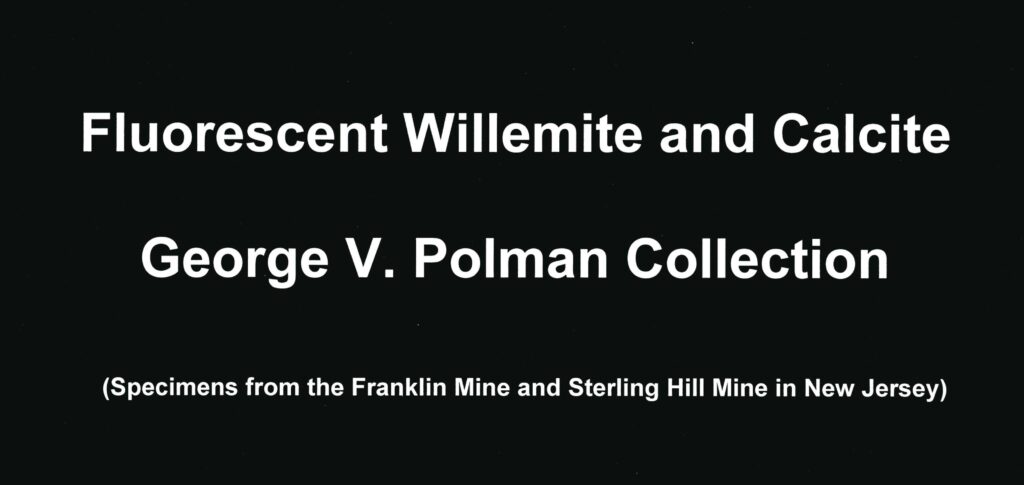
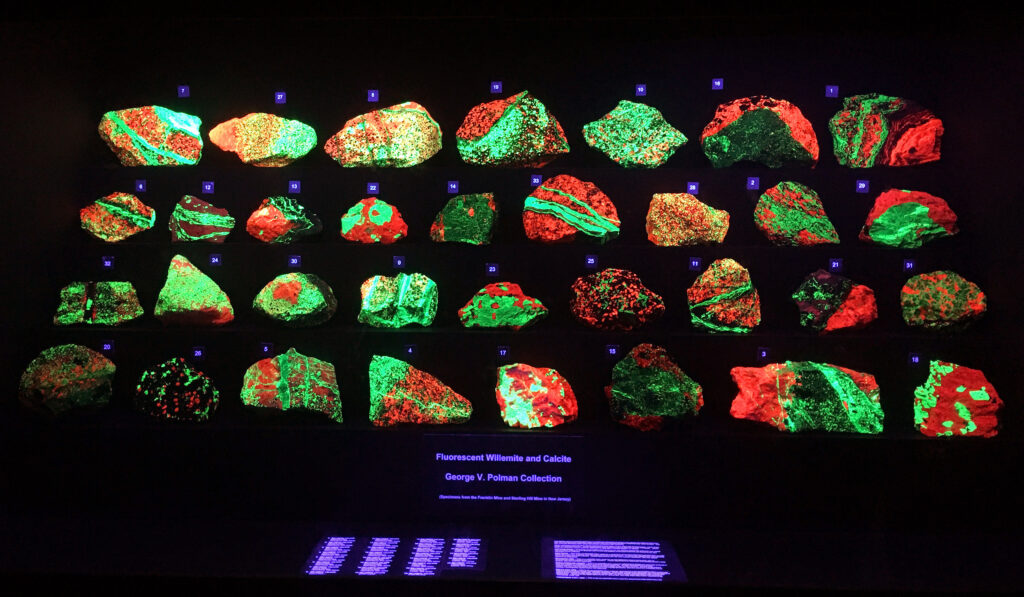
The completed display for Tucson-2016. The “theme” for the display was willemite and calcite from the Franklin Mine and Sterling Hill Mine in New Jersey. Information about the various types of specimens is provided below, along with the locations of each specimen displayed above.
Photograph by Deborah S. Polman.
TOP ROW FROM LEFT TO RIGHT
Willemite and Calcite (Vein Piece) – Sterling Hill Mine, Ogdensburg, New Jersey.
Willemite and Calcite (Christmas Tree Ore) – Franklin Mine, Franklin, New Jersey.
Willemite and Calcite (Vein Piece) – Sterling Hill Mine, Ogdensburg, New Jersey.
Willemite and Calcite (Pattern Piece) – Sterling Hill Mine, Ogdensburg, New Jersey.
Willemite and Calcite (Vein Piece) – Sterling Hill Mine, Ogdensburg, New Jersey.
Willemite and Calcite (Exsolution Willemite) – Sterling Hill Mine, Ogdensburg, New Jersey.
Willemite and Calcite (Mylonitic Ore) – Sterling Hill Mine, Ogdensburg, New Jersey.
SECOND ROW FROM LEFT TO RIGHT
Willemite and Calcite (Vein Piece) – Sterling Hill Mine, Ogdensburg, New Jersey.
Willemite and Calcite (Vein Piece) – Sterling Hill Mine, Ogdensburg, New Jersey.
Willemite and Calcite (Vein Piece) – Sterling Hill Mine, Ogdensburg, New Jersey.
Willemite and Calcite (Pattern Piece) – Sterling Hill Mine, Ogdensburg, New Jersey.
Willemite and Calcite (Exsolution Willemite) – Sterling Hill Mine, Ogdensburg, New Jersey.
Willemite and Calcite (Vein Piece) – Franklin Mine, Franklin, New Jersey.
Willemite and Calcite (Christmas Tree Ore) – Franklin Mine, Franklin, New Jersey.
Willemite and Calcite (Mylonitic Ore) – Sterling Hill Mine, Ogdensburg, New Jersey.
Willemite and Calcite (Pattern Piece) – Sterling Hill Mine, Ogdensburg, New Jersey.
THIRD ROW FROM LEFT TO RIGHT
Willemite and Calcite (Vein Piece) – Franklin Mine, Franklin, New Jersey.
Willemite and Calcite (Shot Ore) – Franklin Mine, Franklin, New Jersey.
Willemite and Calcite (Pattern Piece) – Franklin Mine, Franklin, New Jersey.
Willemite and Calcite (Vein Piece) – Sterling Hill Mine, Ogdensburg, New Jersey.
Willemite and Calcite (Pattern Piece) – Sterling Hill Mine, Ogdensburg, New Jersey.
Willemite and Calcite (Polka Dot Ore) – Franklin Mine, Franklin, New Jersey.
Willemite and Calcite (Vein Piece) – Sterling Hill Mine, Ogdensburg, New Jersey.
Willemite and Calcite (Pattern Piece) – Sterling Hill Mine, Ogdensburg, New Jersey.
Willemite and Calcite (Pattern Piece) – Franklin Mine, Franklin, New Jersey.
BOTTOM ROW FROM LEFT TO RIGHT
Willemite and Calcite (Pattern Piece) – Sterling Hill Mine, Ogdensburg, New Jersey.
Willemite and Calcite (Polka Dot Ore) – Franklin Mine, Franklin, New Jersey.
Willemite and Calcite (Vein Piece) – Sterling Hill Mine, Ogdensburg, New Jersey.
Willemite and Calcite (Vein Piece) – Sterling Hill Mine, Ogdensburg, New Jersey.
Willemite and Calcite (Pattern Piece) – Sterling Hill Mine, Ogdensburg, New Jersey.
Willemite and Calcite (Exsolution Willemite) – Sterling Hill Mine, Ogdensburg, New Jersey.
Willemite and Calcite (Vein Piece) – Sterling Hill Mine, Ogdensburg, New Jersey.
Willemite and Calcite (Pattern Piece) – Sterling Hill Mine, Ogdensburg, New Jersey.
COLLECTING WILLEMITE AND CALCITE SPECIMENS
When collecting willemite and calcite specimens from New Jersey, there are several types. Each of the types are described below. Some specimens have scientific names describing their formation. Some have un-scientific names used by collectors to describe a certain pattern or variety.
PATTERN PIECE – This is an un-scientific term used for an ore sample where the willemite and calcite can be either coarse or fine grained, and where the pattern of the two minerals are found to be very aesthetic to the collector.
VEIN PIECE – This is an un-scientific term used for a specimen where the willemite has filled thin or wide fractures in the ore, creating vein like patterns within the host rock. In most vein specimens, the willemite veins are highly phosphorescent. These specimens can be very visually aesthetic, and are widely enjoyed by collectors.
MYLONITIC ORE – This is a scientific term used for an ore specimen that is deformed, due to mechanical forces applied in a definite direction. These specimens of willemite and calcite exhibit a flow texture, and can be very aesthetic.
EXSOLUTION WILLEMITE – This is a scientific term used for specimens where the willemite is found in very thin sheets or lamellae within a mineral called tephroite. At high temperatures (during metamorphism) the tephroite was able to accommodate a fair amount of zinc. As the temperature cooled, the zinc was no longer compatible in the crystal structure, and the willemite solidified out of solution, forming thin layers within the tephroite.
POLKA DOT ORE – This is an un-scientific term used for specimens from the Franklin Mine where the host mineral is a dark brown manganoan diopside. Within the manganoan diopside are coarse grains of calcite and sometimes willemite. If there are enough of these grains, the specimen can have a polka dot appearance. Good quality specimens of “polka dot” ore are in high demand within the collecting community. I believe in the past specimens of “polka dot” ore may have also been referred to as “Christmas Tree” ore.
CHRISTMAS TREE ORE – This is an un-scientific term used for specimens that were from the Buckwheat Dump in Franklin, New Jersey (Franklin Mine). These are specimens where small grains of willemite are in a matrix of solid calcite.
SHOT ORE – This is an un-scientific term used for specimens from the Franklin Mine where the grains of willemite are rounded and the size of buckshot. These grains are scattered in a matrix of solid calcite. In specimens of “shot ore”, the willemite will fluoresce very brightly under shortwave ultraviolet light, and will even fluoresce under longwave ultraviolet light.
Tucson Gem and Mineral Show - February 12-15, 2015
All photographs are copyright 2015. However, if you would like a copy of any photograph
below, I have higher quality digital images available. Please email me.
In 2014 the Fluorescent Mineral Society (FMS) and the Tucson Gem and Mineral Society (TGMS) combined funds, and had built a new fluorescent mineral display case. The case was to be used at the TGMS main show in Tucson. I assisted in it’s design, and was honored to be asked to display specimens from my collection during this show. Below is an article I wrote for the FMS Waves newsletter. The article explains the history of the fluorescent mineral display in Tucson, and provides information on how the new case came about. Some of the history is a repeat from an article I did further down on this webpage for the 2008 Tucson show. Some photographs of the set up and the display itself are below the article. I hope you enjoy them.
HISTORY
In 2008, as part of the “American Mineral Treasures” display at the Tucson Gem and Mineral show, Peter Megaw (Special/Guest Exhibits Chairman) and Richard Flagg (Exhibit Case Chair) wanted to have an impressive fluorescent mineral display as part of the Franklin Mine/Sterling Hill Mine exhibit (along with a case of white light specimens as well).
With this idea now as a catalyst, Peter decided to convert one of the two Scott Cases, donated to the Tucson Gem and Mineral Society (TGMS) by a local mineral collector, for use to display fluorescent minerals. The Scott Case was 7 feet tall, and appeared to be perfect for this application. Of course, it needed some redesign work, as it was originally built as a white light display case.
While Richard Flagg gets full credit for the work necessary to convert the Scott Case, Dick Bostwick, Tema Hecht, Dr. Earl Verbeek and Don Newsome were all consulted on its redesign, and all assisted in their own way. Peter convinced the TGMS to buy four UV Systems TripleBright shortwave lamps to be used in the case. In order to get Tucson Fire Inspector approval, Don (UV Systems) had to get the lamps approved by a nationally accredited testing laboratory.
Over the next years, the Sterling Hill Mining Museum was asked to provide a fluorescent mineral display each year at the Tucson show. The task was given to Dick Bostwick, Tema Hecht and Dr. Earl Verbeek. Although the case was not really designed or ideal for fluorescent minerals, Dick, Tema and Earl did a fantastic job each year, making sure that there were beautiful specimens in the case for the general public to enjoy. In 2013 the Sterling Hill Mining Museum decided to pass the torch of putting in this display each year to the Fluorescent Mineral Society (FMS).
DEVELOPMENT OF NEW CASE
In September, 2014 I received an email from Mardy Zimmermann (Southwest Fluorescent Finders), asking if I would be willing to display some of my specimens in the FMS case at Tucson for 2015. I told her I would, if I could volunteer the help of my good friend Kerry Cooper. After talking with Kerry, the decision was made that specimens for this display would be chosen from both of our collections. Once I got a firm commitment from Kerry, I contacted Mardy and told her that I would commit to doing the case for 2015. Al Liebetrau, who was FMS President at the time, was contacted as well.
Sometime soon after I made the commitment, I contacted Al with a discussion about the FMS possibly building a new display case, one much more suited to displaying fluorescent minerals. Al was very open to this idea, and a small committee was formed to start the process. The first problem was funding. I suggested early on that we ask the FMS membership for donations, and I offered the first donation of $100.00. Al thought that between member donations and some funding by the FMS itself, that we could get it done.
Luckily a short time after the committee was formed, Jan Wittenberg (former FMS President) was visiting Phoenix for a wood turning convention. Jan is not only a fluorescent mineral collector, but a great wood worker and tradesman as well. Jan visited my house, looked at my completed display case, and we went off to dinner to discuss plans for the case.
After multiple emails between Jan, Al, Dick Bostwick and me, we managed to get the ball rolling on the new case. Don Newsome also provided some advice as well. Once we had a cost quote put together, Al was able to convince the TGMS to split the cost with the FMS, and no individual donations were required.
Jan built the case in plenty of time to deliver to Tucson for the 2015 show. The total height of the case is 84 inches tall. The display area itself is 30 inches tall, 68 inches wide and 29 inches deep. The stair step shelving that we required for this display consisted of 4 shelves (4 inches deep, 6 inches tall). Jan got to the show early in the week, and removed the drapery from the old case, and installed it to the new one.
On February 11, 2015 Jan, Kerry and I got to the convention center to set up the new display. Kerry and I decided that the “theme” of our display this year was going to be shortwave minerals only, with no specimens from the Franklin Mine or Sterling Hill Mine. The idea being to expose the general public to specimens and localities they may not have seen before. A total of 38 specimens were included in the display. This number included three split pairs, which Kerry is fond of collecting.
The display case turned out to be quite nice, and took a quantum leap forward from the old one. Kerry and I received many compliments on the display. I am looking forward to assisting with this case again in the future. My thanks go out to Jan for doing a superb job on building the case. Also, many thanks to Kerry for assisting me with the display, and to all those that offered advice, guidance etc. in making this case happen.
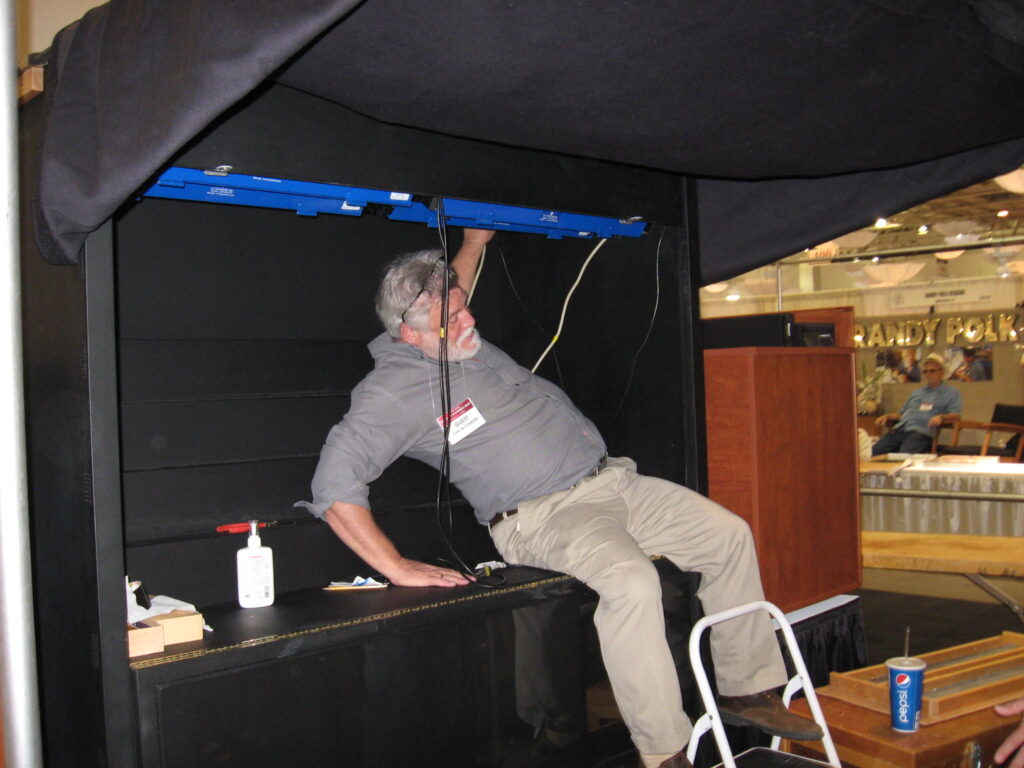
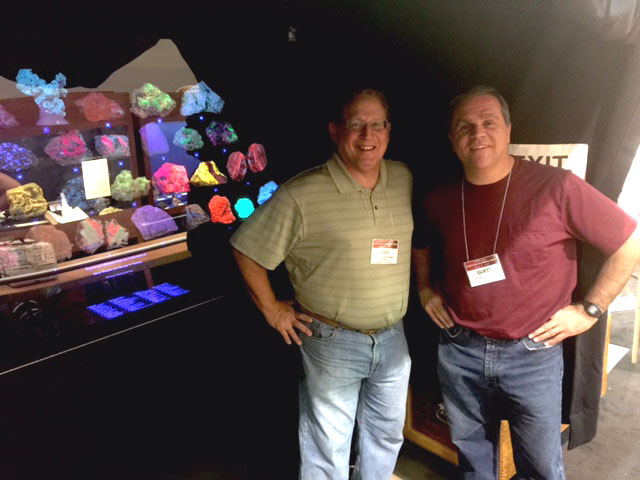
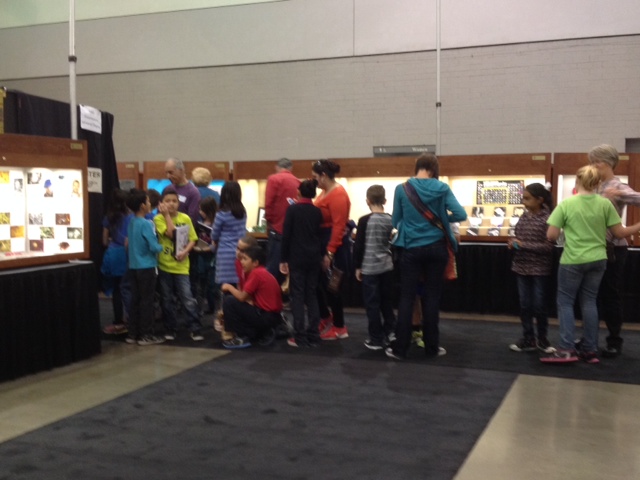
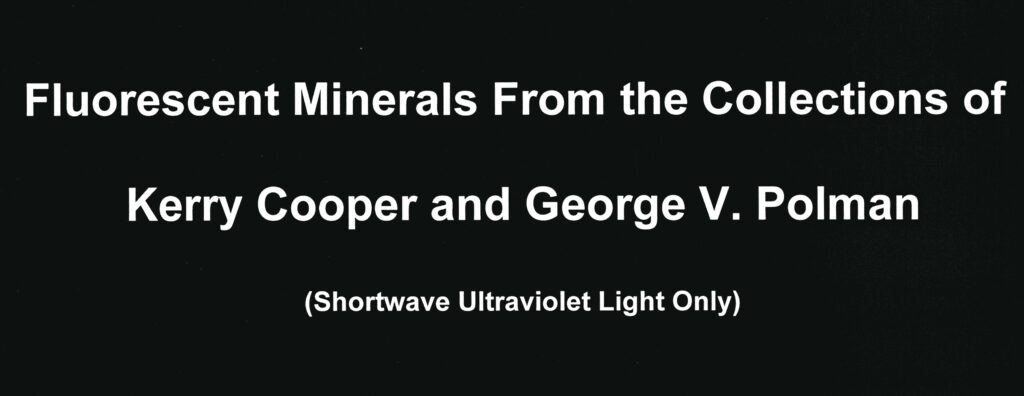
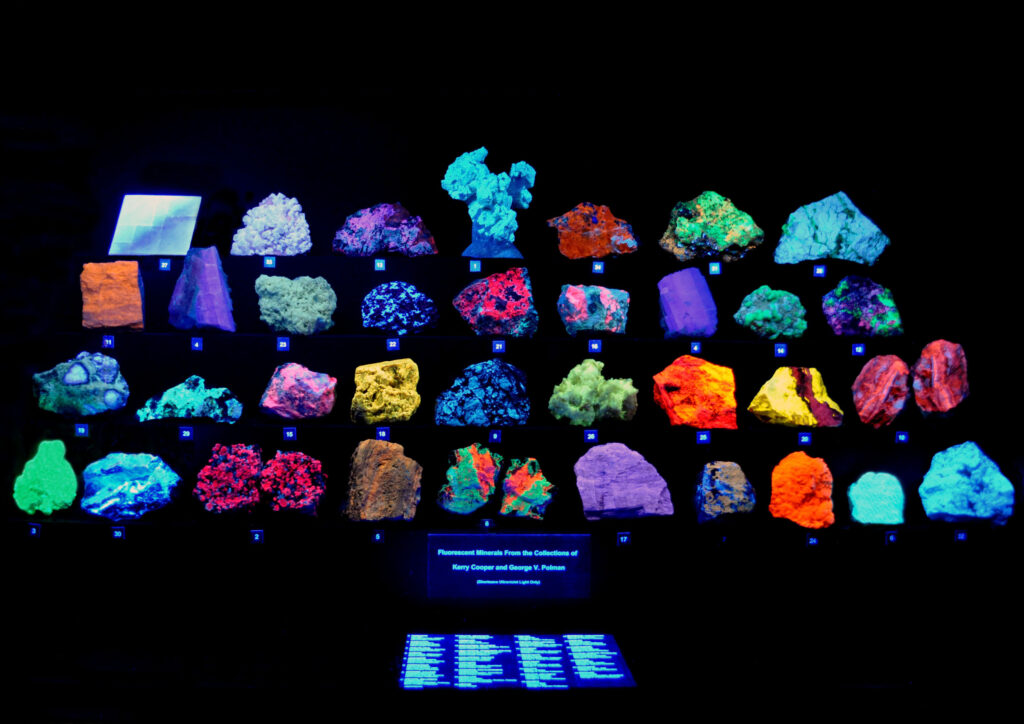
The completed display for Tucson-2015. The “theme” for the display was shortwave mineral specimens only, with none of the specimens being from the Franklin or Sterling Hill Mines. The idea was to expose the general public to some new minerals and localities that they might not have seen before. Information on each specimen in the case is provided below.
TOP ROW FROM LEFT TO RIGHT
Calcite – Challenger Cave, Nuevo Leon State, Mexico. George V. Polman Collection.
Aragonite – Agrigento, Sicily, Italy. George V. Polman Collection.
Smithsonite, Aragonite, Calcite – Nellie James Mine, Miller Canyon, Arizona. Kerry Cooper Collection.
Pargasite – Luc Yen, Yen Bai Province, Vietnam. Kerry Cooper Collection.
Sodalite – Tasaq Slope, Ilimaussaq Complex, Greenland. George V. Polman Collection.
Caliche, Hyalite, Scheelite – Princess Pat Mine, Near Adalanto, California. George V. Polman Collection.
Magnesite, Chalcedony – Near Bagdad, Arizona. George V. Polman Collection.
SECOND ROW FROM LEFT TO RIGHT
Tremolite – Balmat, New York. Kerry Cooper Collection.
Kunzite – Kunar Valley, Afghanistan. Kerry Cooper Collection.
Anglesite – Broken Hill, New South Wales, Australia. George V. Polman Collection.
Baratovite – Alayskiy Range, Tienshan Mountains, Tajikistan. George V. Polman Collection.
Tugtupite – Kvanefjeld, Ilimaussaq Complex, Greenland. George V. Polman Collection.
Tugtupite, Polylithionite – Kangerlussaq, Ilimaussaq Complex, Greenland. Kerry Cooper Collection.
Kunzite – Kunar Valley, Afghanistan. Kerry Cooper Collection.
Chalcedony, Caliche – Mohave County, Arizona. Kerry Cooper Collection.
Smithsonite, Willemite – El Refugio Mine, Choix, Sinaloa, Mexico. Kerry Cooper Collection.
THIRD ROW FROM LEFT TO RIGHT
Calcite – Little 38 Mine, Terlingua, Texas. George V. Polman Collection.
Idrialite – Culver-Baer Mine, Sonoma County, California. George V. Polman Collection.
Tugtupite – Tasaq Slope, Ilimaussaq Complex, Greenland. Kerry Cooper Collection.
Zircon – Harts Range, Northern Territory, Australia. George V. Polman Collection.
Amazonite – Broken Hill, New South Wales, Australia. Kerry Cooper Collection.
Quartz – Pisa Province, Tuscany, Italy. George V. Polman Collection.
Calcite, Dolomite – Langban, Filipstad, Varmland, Sweden. George V. Polman Collection.
Calcite, Wollastonite – White Knob Quarry, San Bernadino Co., California. George V. Polman Collection.
Calcite, Aragonite – 3-Adit, Tooele County, Utah. Kerry Cooper Collection.
BOTTOM ROW FROM LEFT TO RIGHT
Hyalite Opal – Orongo Mountains, Namibia. Kerry Cooper Collection.
Hydrozincite – Yellow Pine Mine, Goodsprings, Nevada. George V. Polman Collection.
Eucryptite – Xainghualing Mine, Hunan Province, China. Kerry Cooper Collection.
Aragonite – Santa Rita Mountains, Santa Cruz County, Arizona. Kerry Cooper Collection.
Calcite, Willemite – Puttapa Mine, North Flinders Ranges, Australia. Kerry Cooper Collection.
Agrellite – Kipawa Complex, Temiscamingue County, Quebec, Canada. Kerry Cooper Collection.
Diopside, Caliche – Patagonia Mountains, Santa Cruz County, Arizona. Kerry Cooper Collection.
Calcite – Bisbee, Arizona. George V. Polman Collection.
Andersonite – Atomic King Mine, San Juan County, Utah. Kerry Cooper Collection.
Diopside – Lake Valhalla, Montville, New Jersey. George V. Polman Collection.
Tucson Gem and Mineral Show - February 1-12, 2012
All photographs are copyright 2012. However, if you would like a copy of any photograph
below, I have higher quality digital images available. Please email me.
This past February, the 58th annual Tucson Gem and Mineral Show was held once again in Tucson, Arizona. This show is the largest of its kind in the world. This year’s theme for the “Main” show was “Minerals of Arizona”. The last time I did a section on my website for the Tucson show was in 2008 when the theme for the “Main” show was “Minerals of the USA”. During that show, the display cases of minerals were probably the best ever assembled. That year the show also featured for the first time, a case specifically designed to showcase fluorescent minerals. That case was to be used by the Sterling Hill Mining Museum (SHMM) each year to showcase fluorescent mineral specimens. I left the 2008 photograph section on this webpage below 2012. Since this year’s theme was “Minerals of Arizona”, I knew the displays were going to be real good again, so I decided to share some pictures that I took during the show on my website.
InnSuites Hotel Show
The InnSuites Hotel show (which is now called the Hotel Tucson City Center show) is one of the best shows for fine mineral specimens, as well as some meteorites and fossils. This show location is one of several put together by show promoter Marty Zinn (Martin Zinn Expositions, L.L.C.). This is the show that I sold at for 8 years, before retiring from doing shows in 2008. This show features approximately 300 dealers on both the first and second floors of the hotel. Below are just a few pictures I took while attending this show.
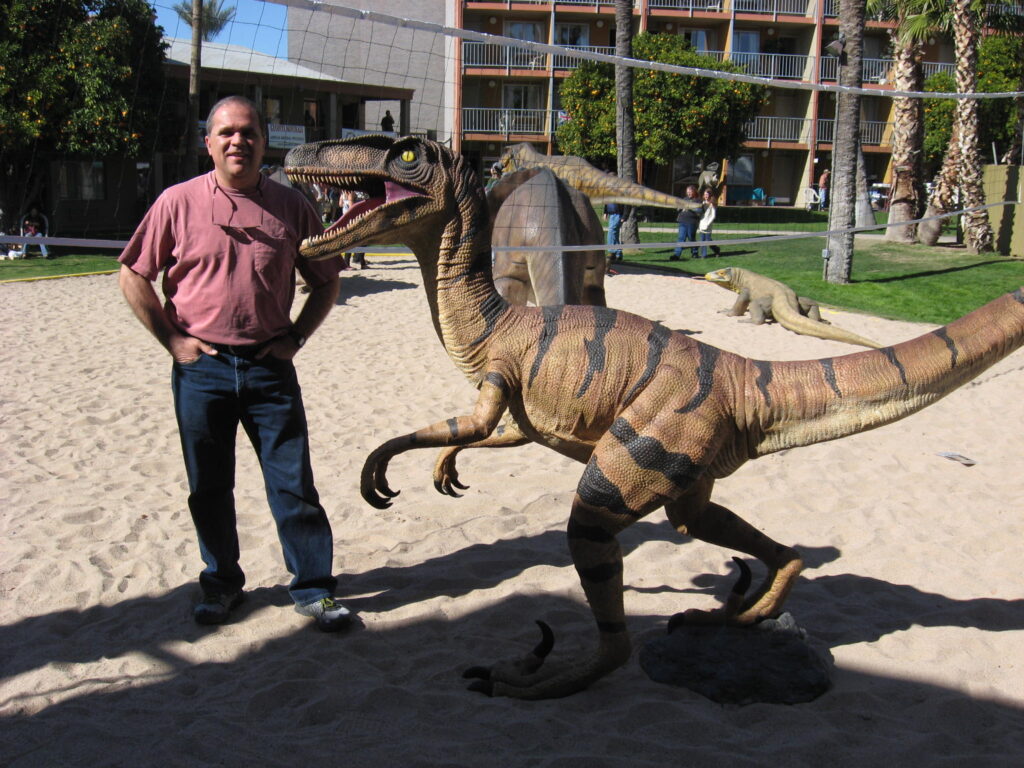
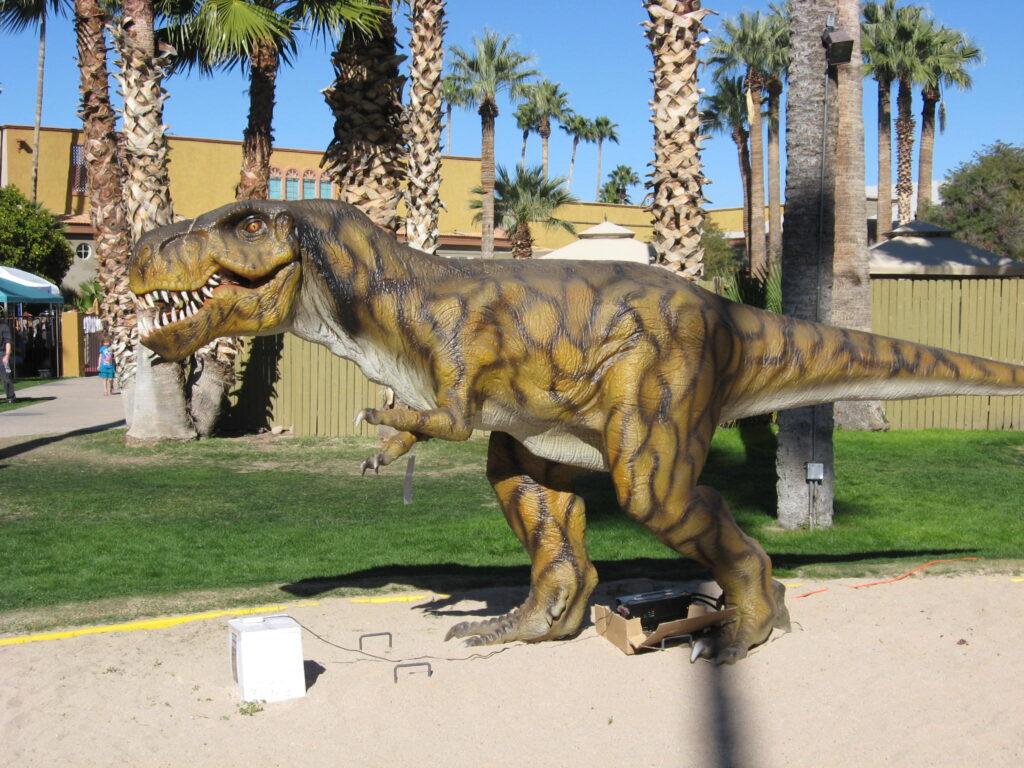
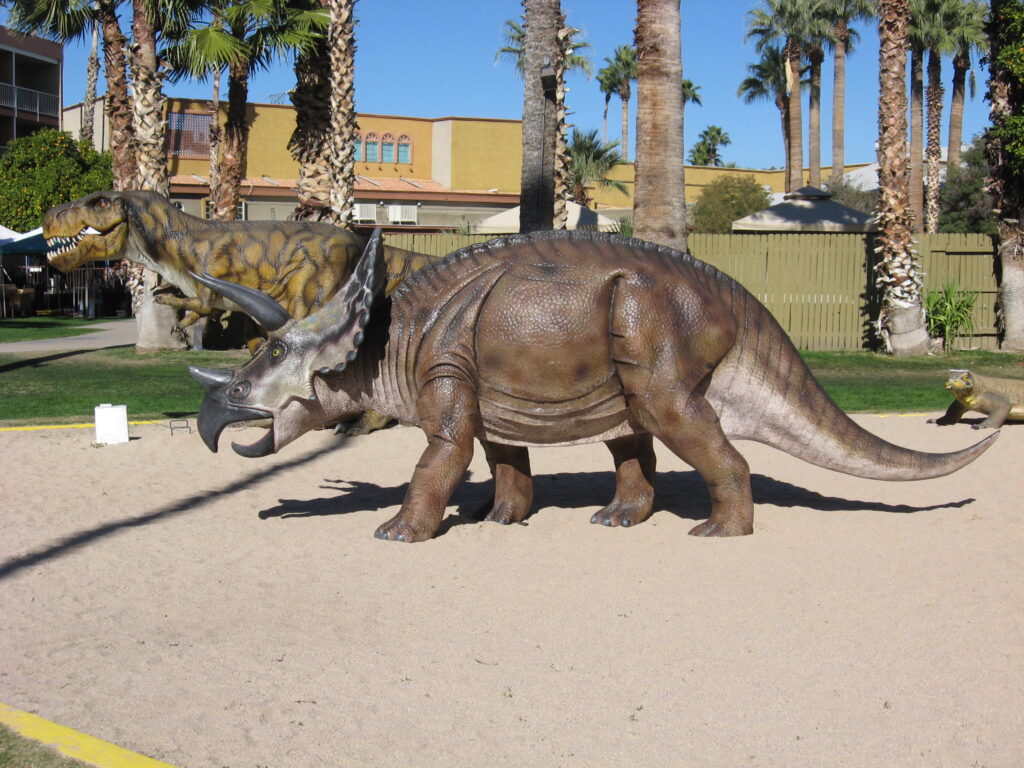
TGMS Main Show
The Tucson Gem and Mineral Society (TGMS) “Main Show” is a 4 day show held at the Tucson Convention Center. This show was started in 1955 and is the anchor for all the satellite shows making up the Tucson Show Experience. The TGMS picks a theme for each years show. A beautiful poster, representing the theme of the show, is available for sale. The show poster idea started in the early 1980s. This years theme was “Minerals of Arizona”. The Main show also features a very large number of display cases. Below are just a few of the cases that I photographed. Below is a copy of the Tucson Show poster for 2012. Further below is a section explaining in detail the fluorescent mineral display exhibited by the Sterling Hill Mining Museum.
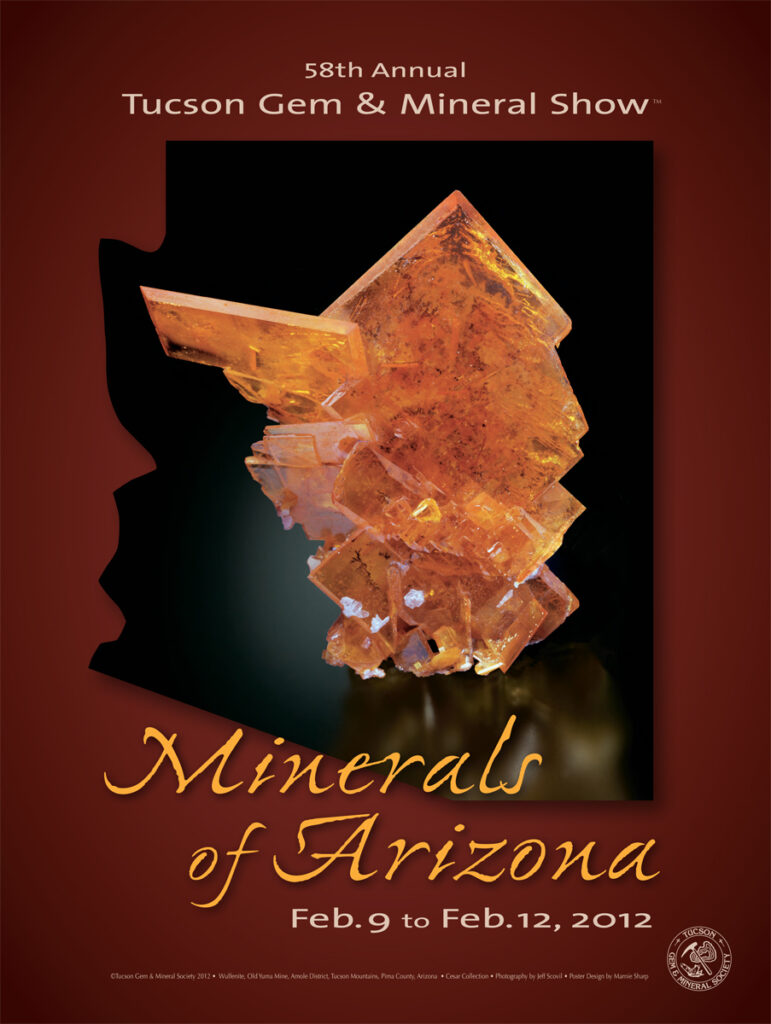
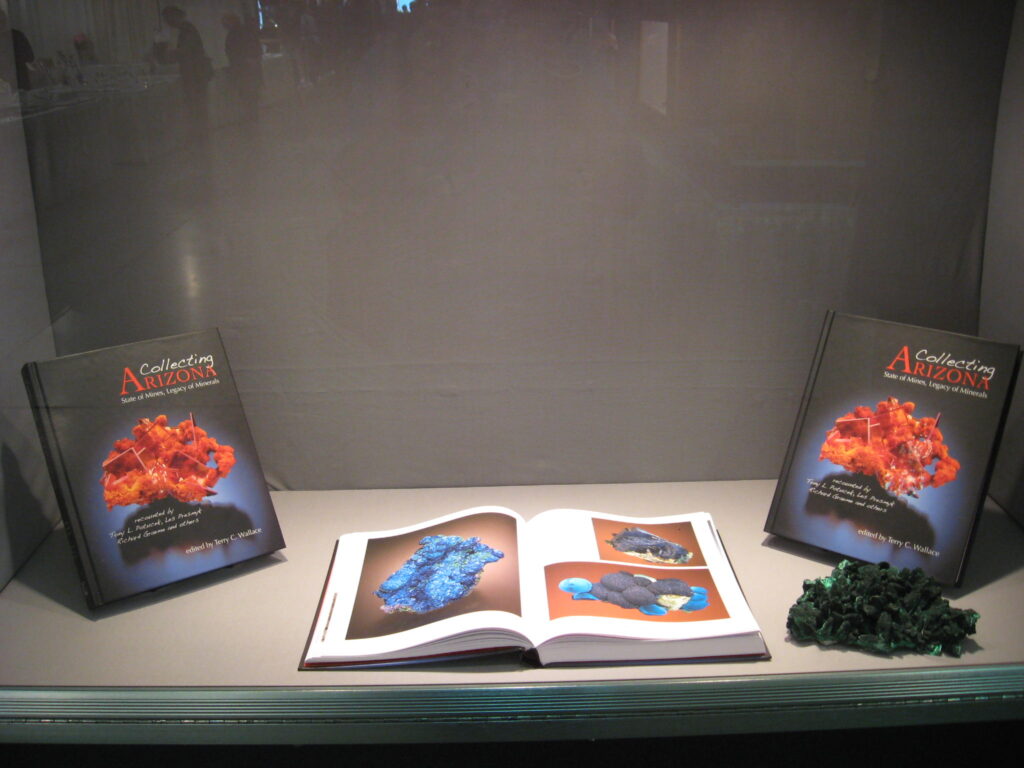
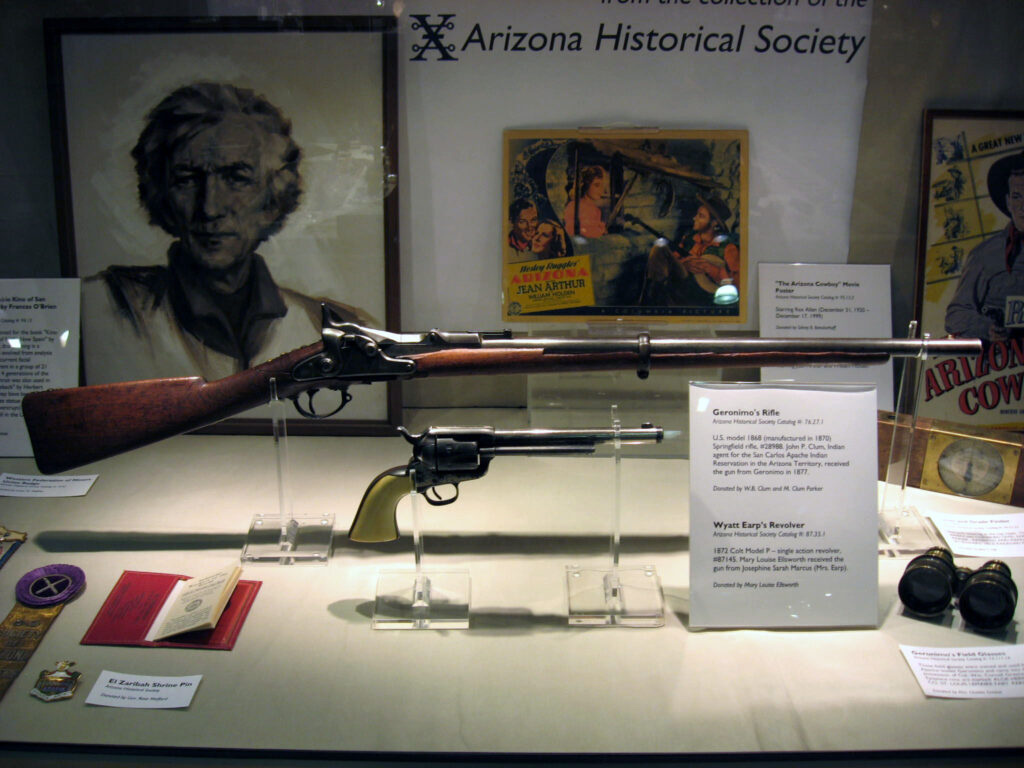
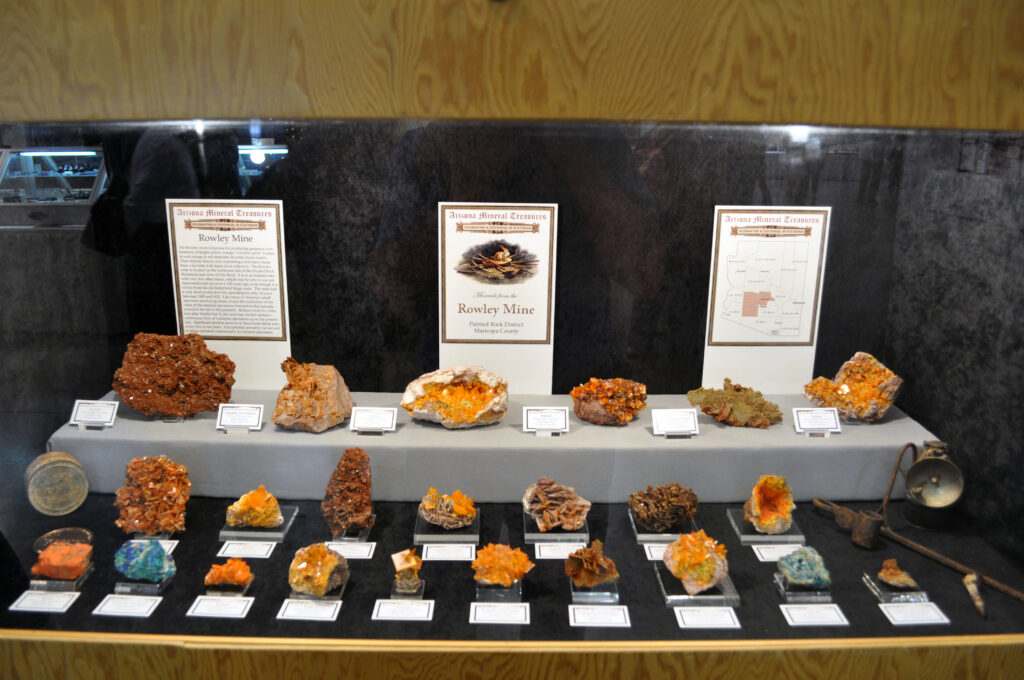
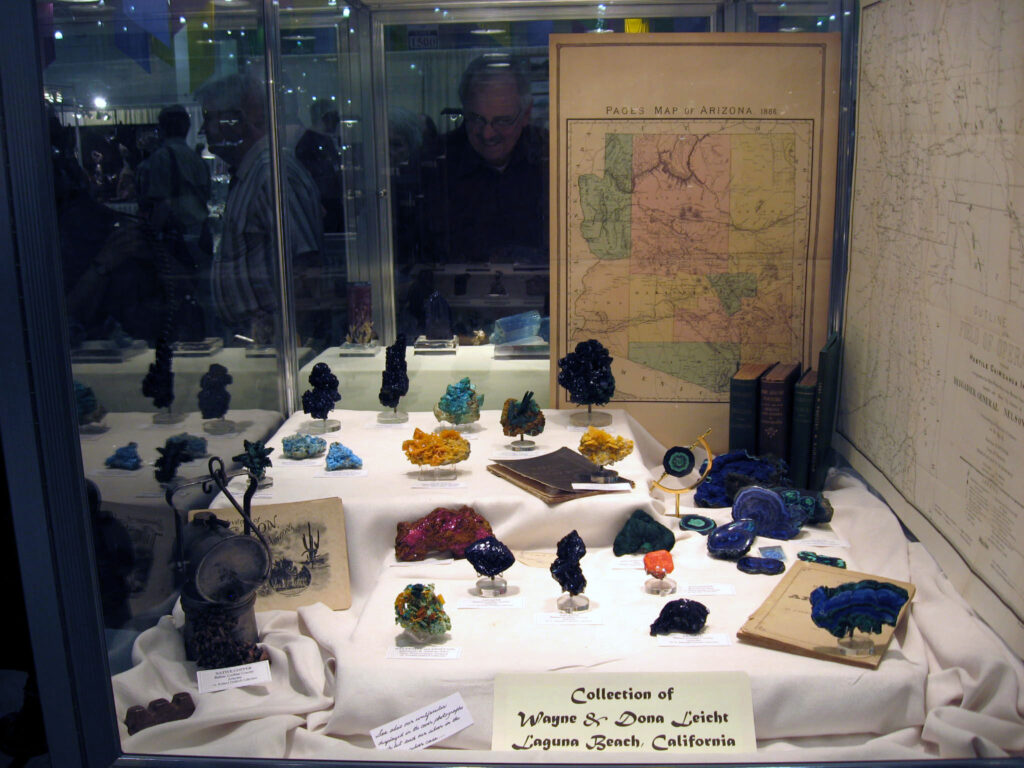
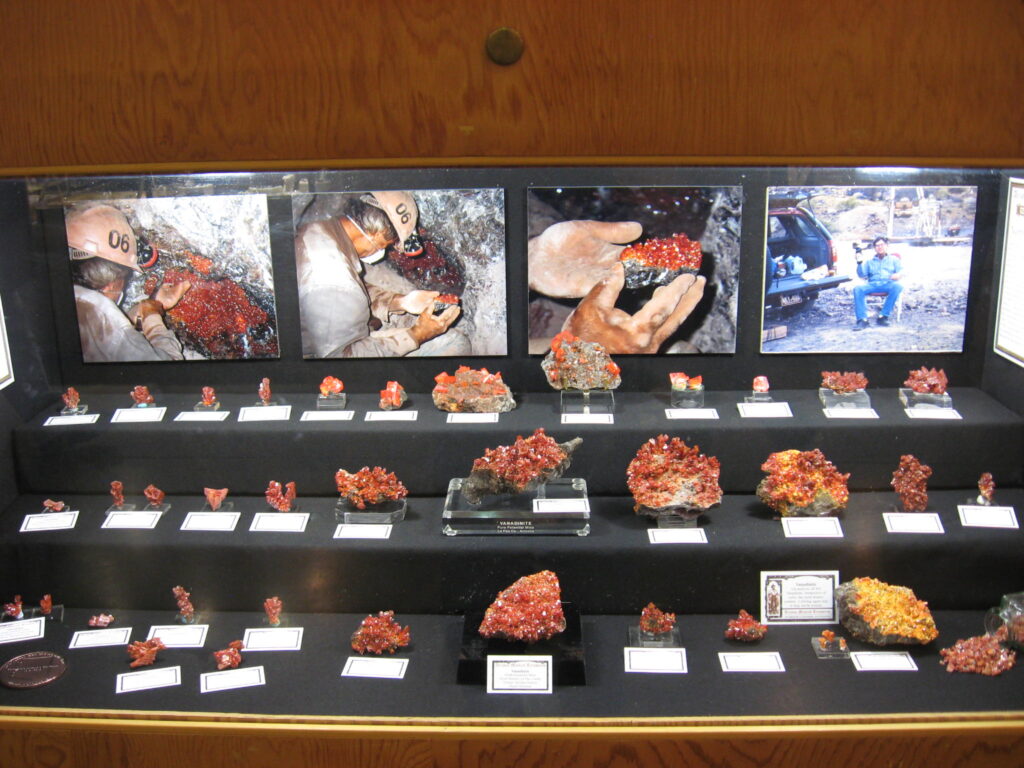
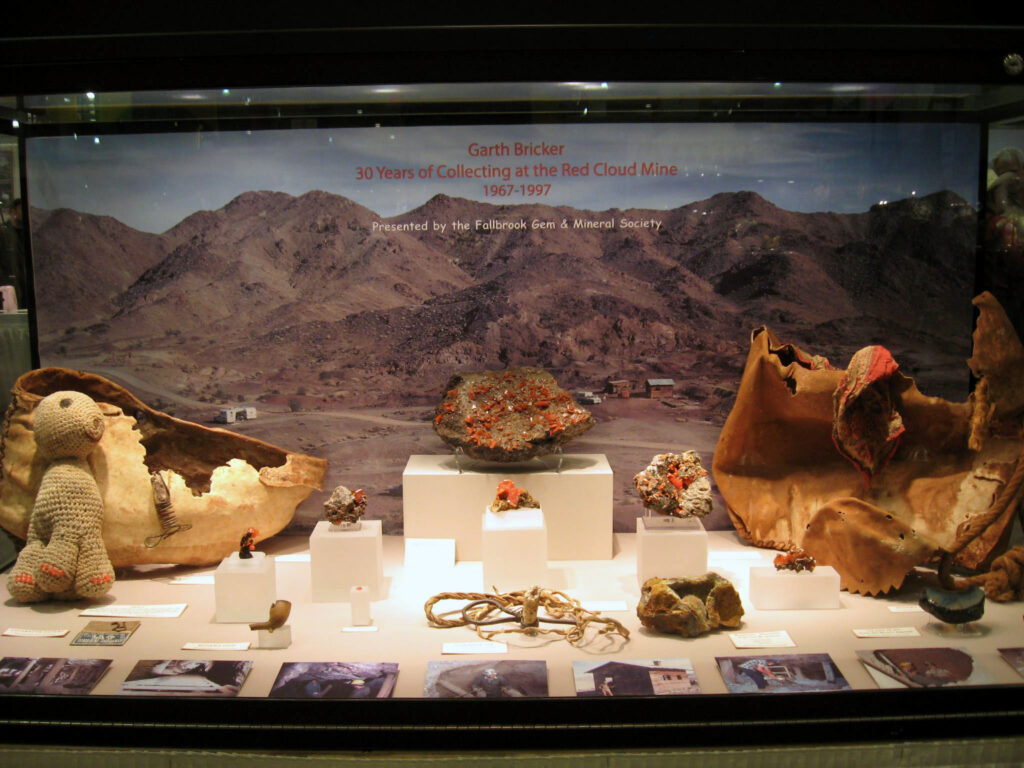
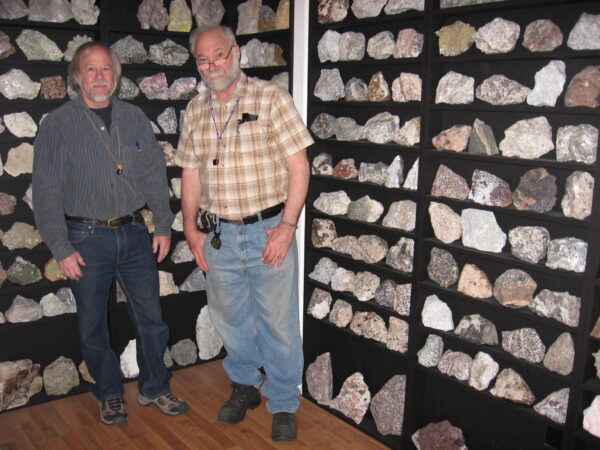
As mentioned previously, the TGMS has provided a case specifically for the Sterling Hill Mining Museum, so that they can display fluorescent mineral specimens at the Main Show. Since the theme for this years show was “Minerals of Arizona”, I was asked by the museum if I would be willing to display some of my Arizona specimens in this case. I told Dr. Earl Verbeek, curator of the museum (left) and Richard Bostwick (right) that I would love to. Several days prior to the Main Show, Earl and Dick came up to my house in Phoenix, and spent some time deciding which specimens they wished to exhibit. After careful consideration, they chose 21 specimens (of which 16 were finally used in the display). They did a great job picking out choice specimens, and I think they may have had some fun seeing the collection as well! When they were done choosing the specimens, we got them all labeled, and boxed up for the trip down to Tucson. The picture above is Earl and Dick in front of a portion of my display in the “Rock Room”.
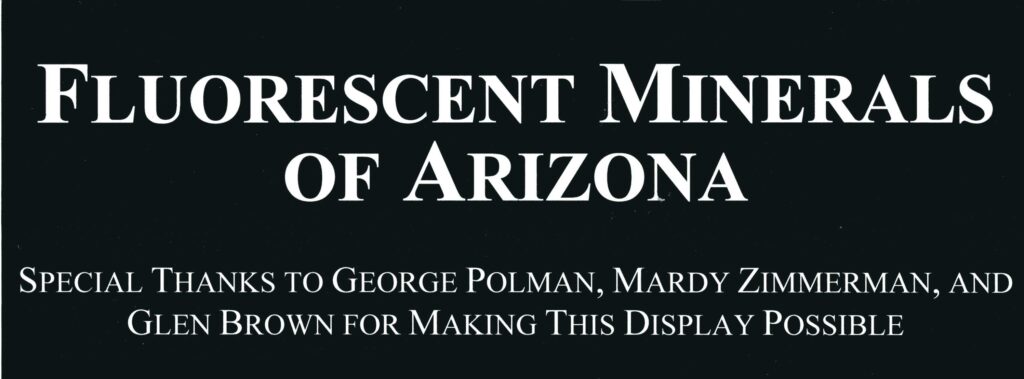
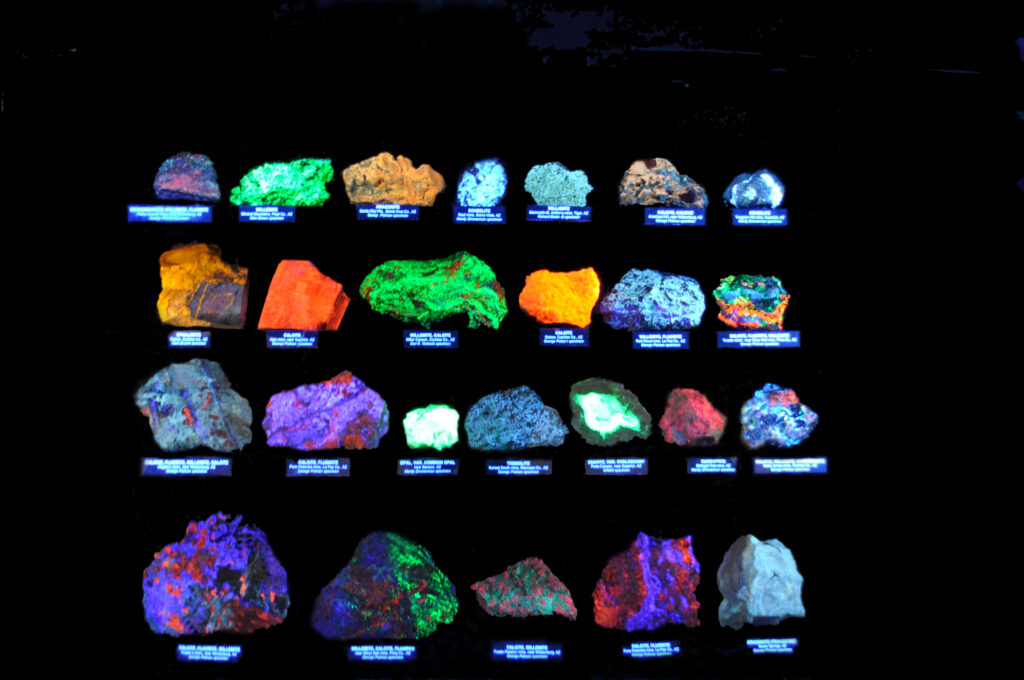
Above is the Fluorescent Minerals of Arizona case that was put together by Dr. Earl Verbeek, Richard Bostwick and Tema Hecht. As you can see from the photograph, they did a great job putting this display together. As usual, all those people who love fluorescent minerals appreciated their efforts. Since I don’t display my specimens in public very often, I wish to personally thank Earl, Dick and Tema for taking the time to put this display together. Information on each specimen in the case is provided below.
TOP ROW FROM LEFT TO RIGHT
Wickenburgite, Willemite, Fluorite – Potter-Cramer Mine, near Wickenburg, AZ. George V. Polman specimen
Willemite – Mineral Mountain, Pinal County, Arizona. Glen Brown specimen.
Aragonite – Santa Rita Mountains, Santa Cruz County, Arizona. George V. Polman specimen.
Scheelite – Reef Mine, Sierra Vista, Arizona. Mardy Zimmerman specimen.
Willemite – Mammoth-St. Anthony Mine, Tiger, Arizona. Richard Bostwick specimen.
Calcite, Caliche – Amethyst Hill, near Wickenburg, Aizona. George V. Polman specimen.
Scheelite – Tungsten Hill Mine, Quartzite, Arizona. Mardy Zimmerman specimen.
SECOND ROW FROM LEFT TO RIGHT
Sphalerite – Bisbee, Cochise County, Arizona. Mark Brandt specimen.
Calcite – Ajax Mine, Near Superior, Arizona. George V. Polman specimen.
Willemite, Calcite – Nellie James Mine, Cochise County, Arizona. Earl R. Verbeek specimen.
Calcite – Bisbee, Cochise County, Arizona. George V. Polman specimen.
Willemite, Fluorite – Red Cloud Mine, La Paz County, Arizona. George V. Polman specimen.
Calcite, Fluorite, Willemite – “3-Color Mine”, Pima County, Arizona. George V. Polman specimen.
THIRD ROW FROM LEFT TO RIGHT
Caliche, Fluorite, Willemite, Calcite – Hogan’s Claim, near Wickenburg, AZ. George V. Polman specimen.
Calcite, Fluorite – Pure Potential Mine, La Paz County, Arizona. George V. Polman specimen.
Common Opal – Near Benson, Arizona. Mardy Zimmerman specimen.
Tremolite – Sunset South Mine, Maricopa County, Arizona. George V. Polman specimen.
Chalcedony – Potts Canyon, near Superior, Arizona. SHMM specimen.
Eucryptite – Midnight Owl Mine, Yavapai County, Arizona. Mardy Zimmerman specimen.
Calcite, Fluorite, Willemite – “3-Color Mine”, Pima County, Arizona. George V. Polman specimen.
BOTTOM ROW FROM LEFT TO RIGHT
Calcite, Fluorite, Willemite – Hogan’s Claim, near Wickenburg, Arizona. George V. Polman specimen.
Willemite, Calcite, Fluorite – Near Silver Bell Mine, Pima County, Arizona. George V. Polman specimen.
Calcite, Willemite – Purple Passion Mine, near Wickenburg, Arizona. George V. Polman specimen.
Calcite, Fluorite – Pure Potential Mine, La Paz County, Arizona. George V. Polman specimen.
Travertine – Seven Springs, Arizona. George V. Polman specimen.
Tucson Gem and Mineral Show - February 2-17, 2008
All photographs are copyright 2008. However, if you would like a copy of any photograph
below, I have higher quality digital images available. Please email me.
As most of you may know, the Tucson Gem and Mineral Show is the largest of its kind in the world. The show may also be one of the oldest, just recently celebrating its 50th anniversary. The show started way back in 1955 with the Tucson Gem and Mineral Society (TGMS) holding its first show in the auditorium of the Helen Keeling Elementary School. The TGMS show today is a
4-day event held in the Tucson Convention Center. This show is affectionately known as the “Main” show. Over the years, the term “Tucson Show” has come to mean the entire collection of all the satellite shows which have grown around the TGMS Main show since the 1960s. Today the Tucson Show has over 30 satellite shows with countless numbers of hotel rooms, tents and booths filled with dealers. Needless to say, the Tucson Show is quite an experience, and one needs about 2 weeks to get most of it in.
I have been attending the Tucson Show every year since 1985 (and have a collection of all the show posters to prove it!). This year was a little strange for me, since I almost missed the Main show for the first time since 1985 due to a terrible case of the flu. However, I did make it down for a couple of hours on Sunday, the last day of the show (thanks to Debbie!). As you will see from the photographs I took at the Main show, I am really glad that I did not miss it! With the theme of this years Main show being “Minerals of the USA”, the display cases were phenomenal, perhaps the best ever! This years show also featured, for the first time, a case specifically designed to display fluorescent minerals within the brightly lit Main Hall of the Convention Center. This case turned out to be just as spectacular as the white light specimen cases. A real testimony to how beautiful a fluorescent mineral display can be if done properly. Information about how this case came about is provided further down the web page.
For those people who could not make the show this year, I hope you enjoy the photographs. I wish I had been feeling better to stay longer and take more photographs of the cases, and the fluorescent mineral specimens. I hope to continue posting Tucson Show photographs on my website each year, especially concentrating on any significant fluorescent mineral exhibits like the one you will see below.
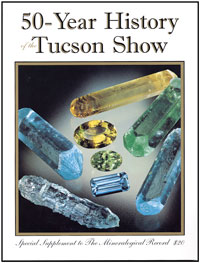
For anyone interested in reading more about the history of the Tucson Show, the Mineralogical Record printed a special 183 page supplement entitled “50-Year History of the Tucson Show”, written by Bob Jones (2004). Bob Jones had attended 42 of the first 50 shows!! The supplement is a great read, and is loaded with fantastic historical photographs of people and mineral specimens. The supplement cost $20.00 and can be purchased through the Mineralogical Record website.
InnSuites Hotel Show
The InnSuites Hotel show is one of the best shows for fine mineral specimens, as well as some meteorites and fossils. This show location is one of several put together by show promoter Marty Zinn (Martin Zinn Expositions, L.L.C.). This is the show that I sold at for the last 8 years. For several reasons, I decided last year to retire from doing this show. Since Marty Zinn had to close a location last year, this year’s InnSuites show featured dealers on both the first and second floors of the hotel. With approximately 300 dealers, this show is a must see while in Tucson!
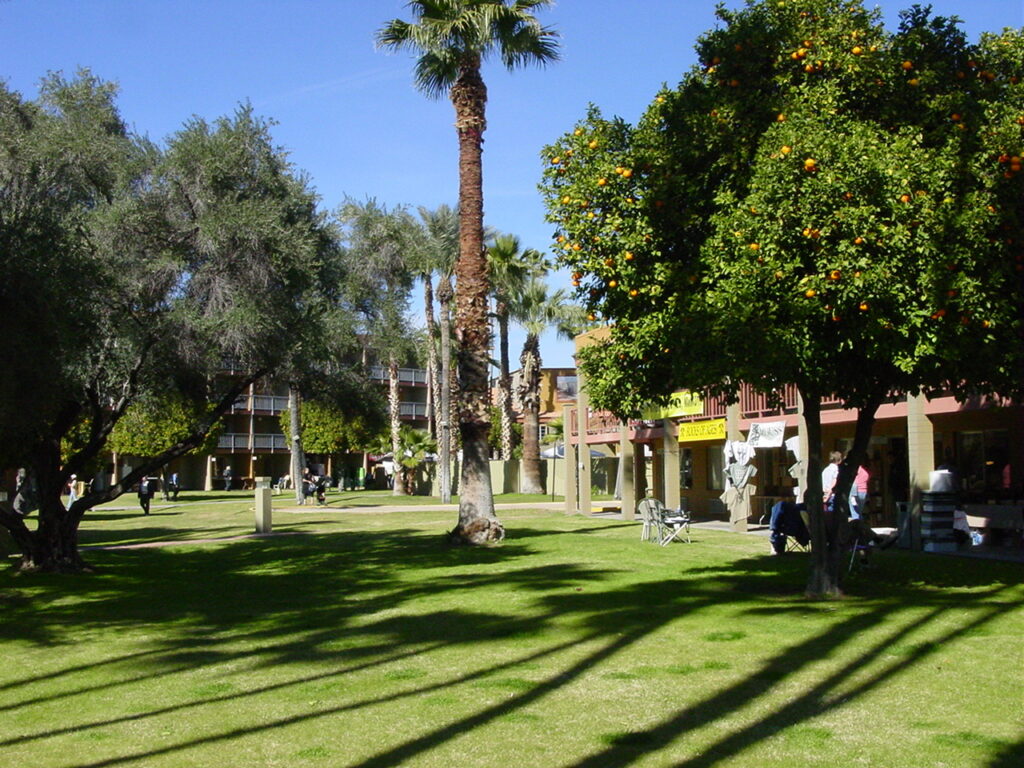
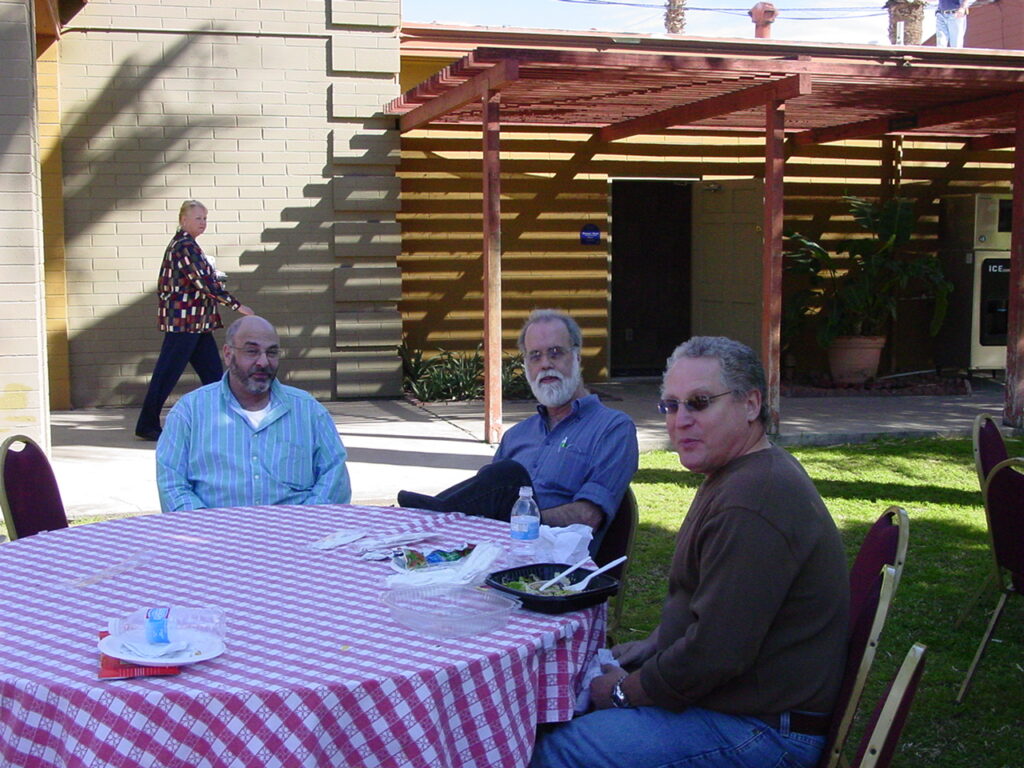

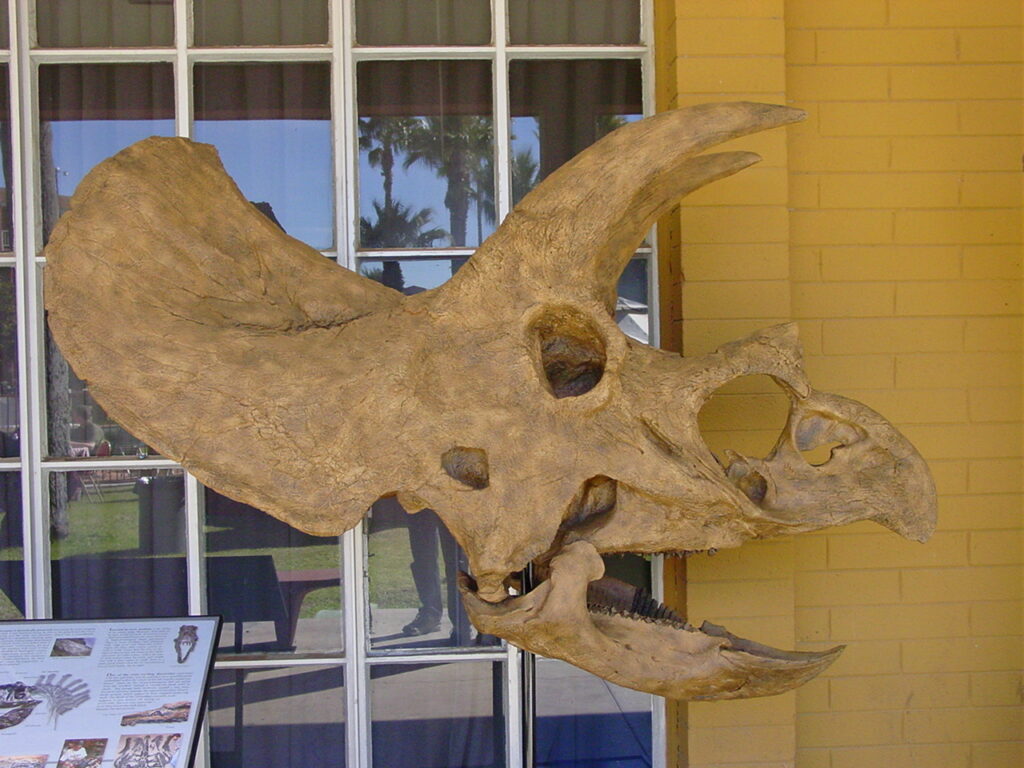
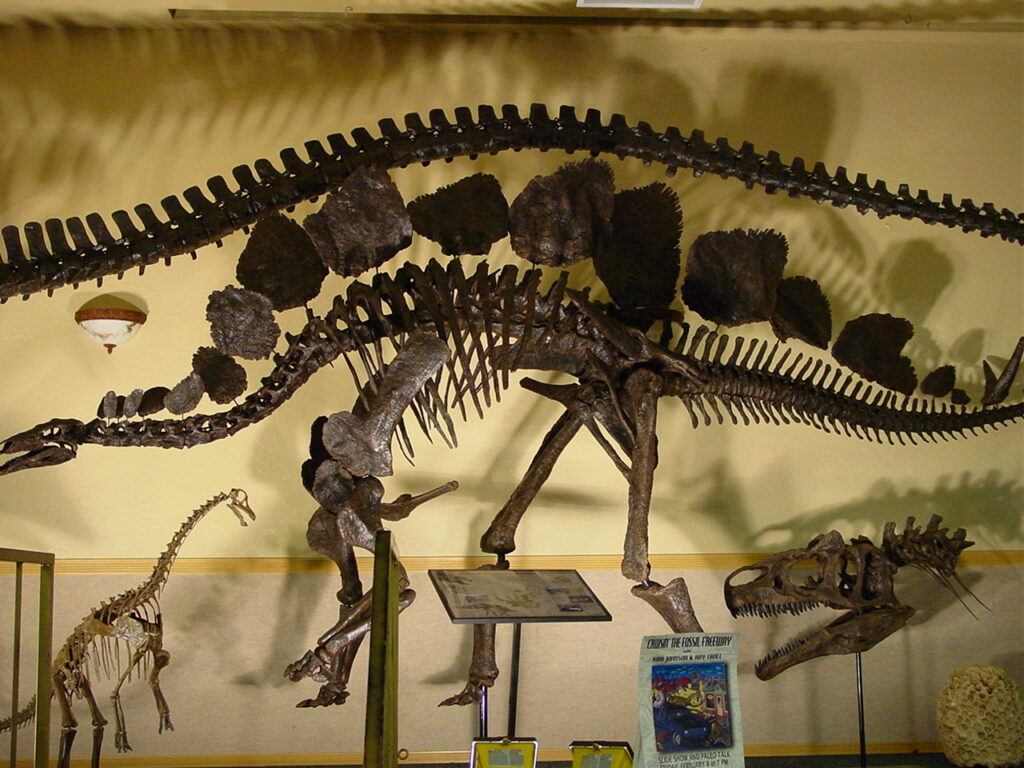
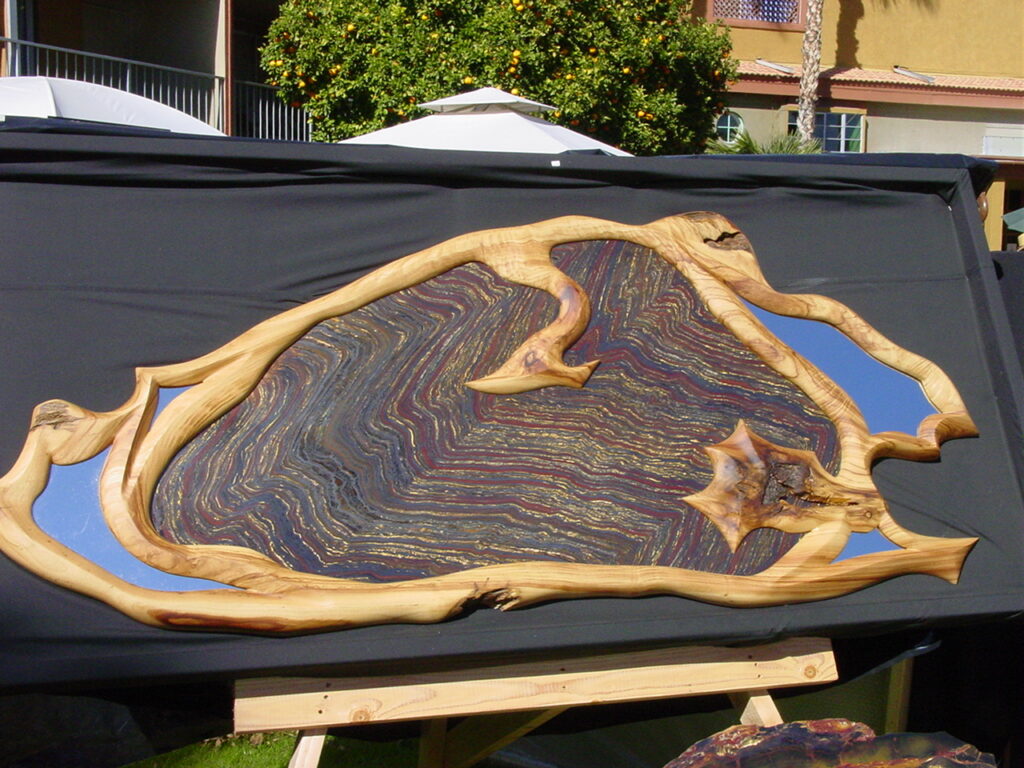
Westward Look Show
The Westward Look Show is held at the Westward Look Resort, north of downtown Tucson. The show is 4 days long. This show was started 7 years ago by several dealers who specialize in high end crystalline specimens. This year there were 25 dealers selling at this show. Some of the dealers share a room, so it is a relatively small show. However, as you can see from the photographs, the specimens available for sale here are incredible, and well worth viewing.
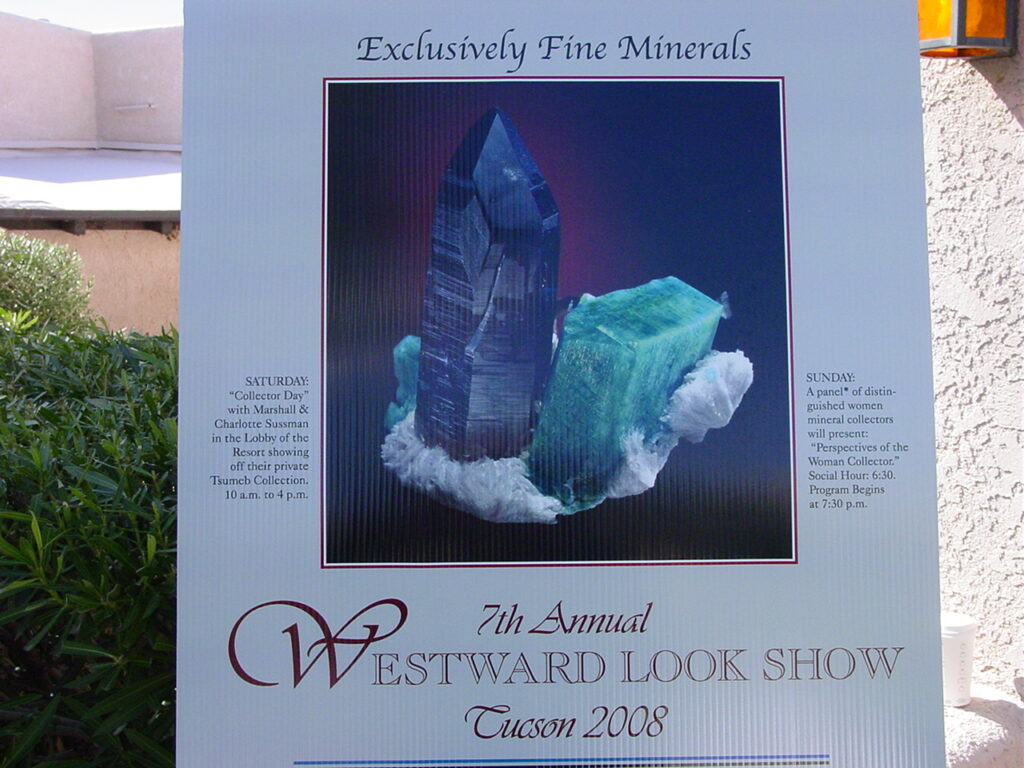
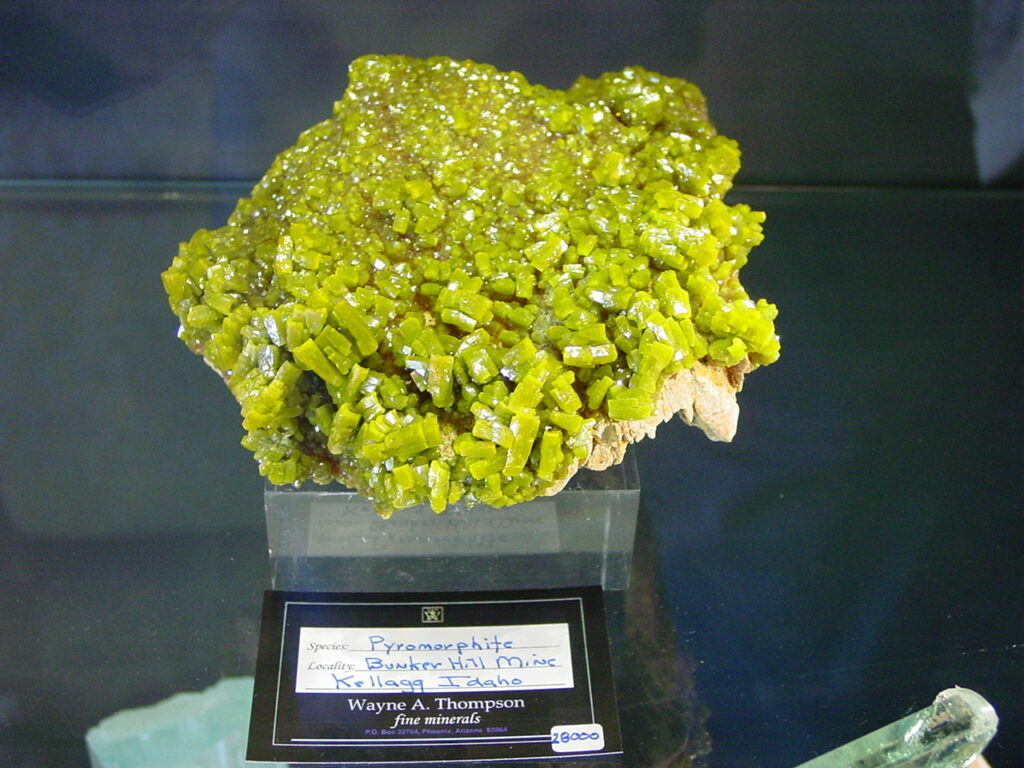
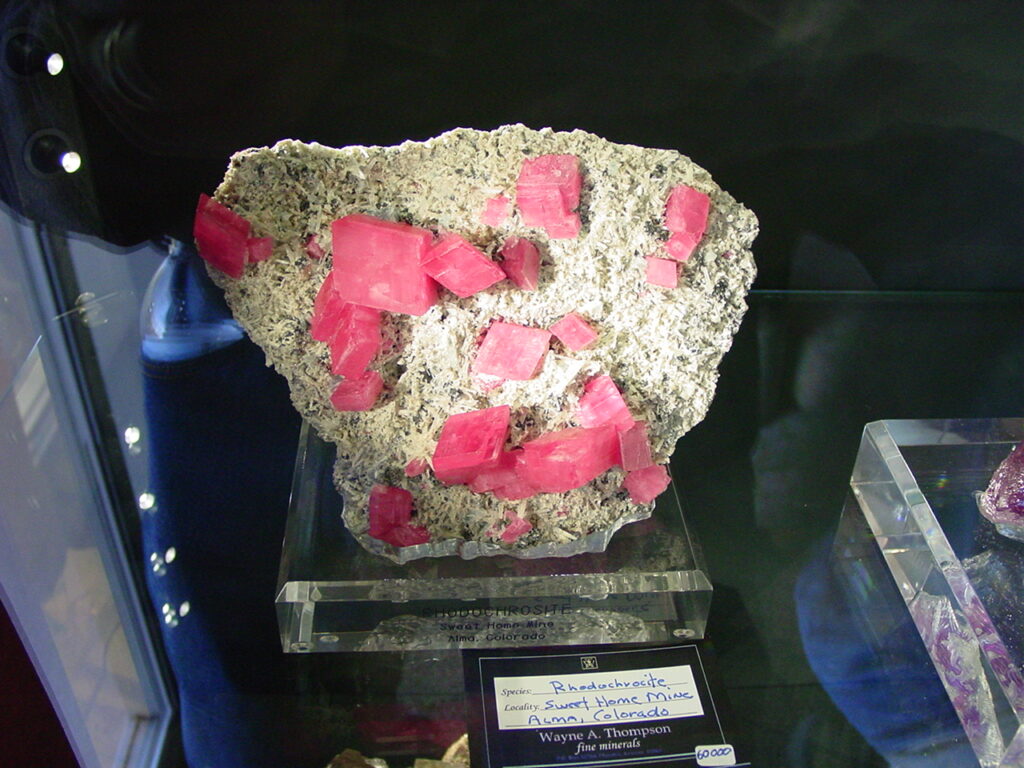
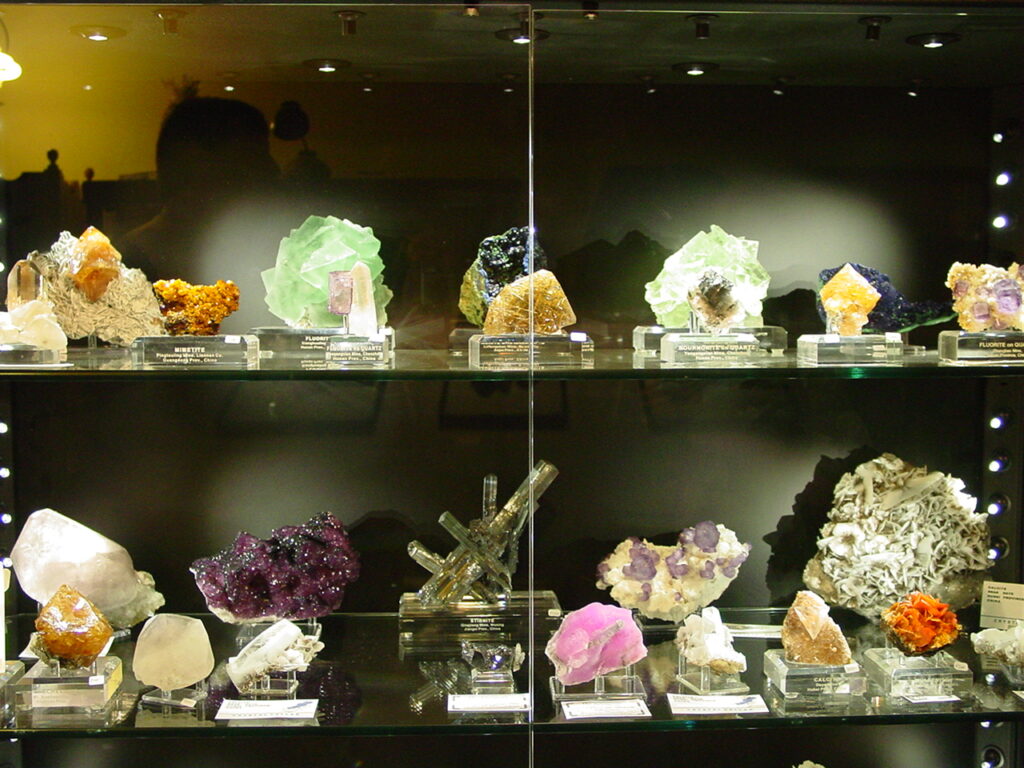
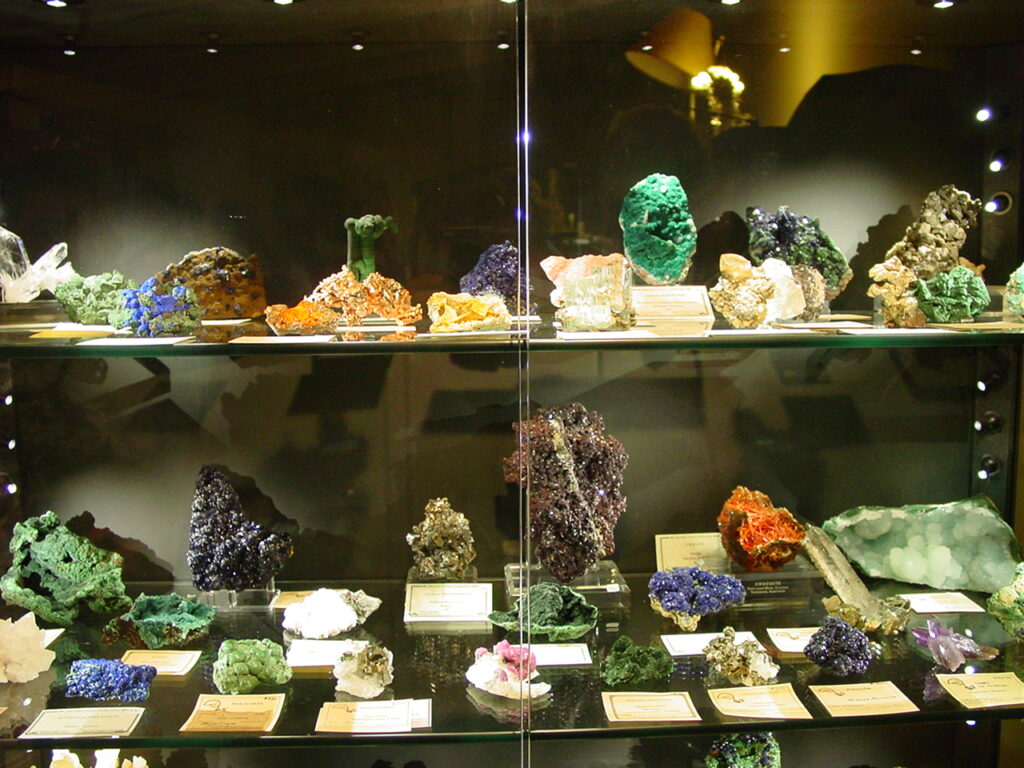
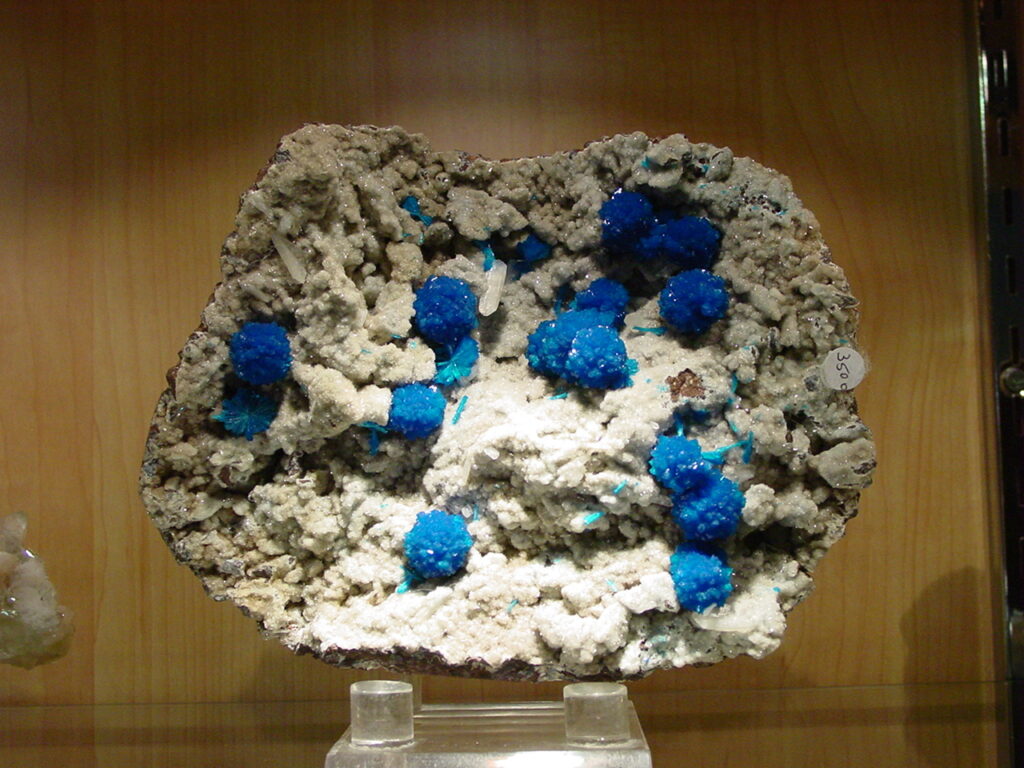
TGMS Main Show
The TGMS Main Show is a 4 day show held at the Tucson Convention Center. This show was started in 1955 and is the anchor for all the satellite shows making up the Tucson Show Experience. The TGMS picks a theme for each years show. A beautiful poster, representing the theme of the show, is available for sale. The show poster idea started in the early 1980s. This years theme was “Minerals of the USA”. The Main show also features a very large number of display cases. This year the display cases were grouped into three types. The first was a group of cases which featured 45 mineral localities. This group of cases were organized under the heading “American Mineral Treasures”, and represented the theme of this years show. The organizers of this years show endeavored to include the very best specimens they could to represent each classic locality. The specimens included in these cases were displayed by both museums and private collectors and/or dealers. These localities, and the specimens placed in them are featured in the new book “American Mineral Treasures”, edited by Gloria Staebler and Wendell Wilson. The second group of display cases were “Special Exhibits”. These cases featured mineral specimens from museums. The third group of display cases were “Guest Exhibits”. These cases featured mineral specimens from private collectors and/or dealers. Some displays were for competition, some not. Needless to say, with a theme like “Minerals of the USA”, and a group of cases under the heading “American Mineral Treasures”, the display cases were filled with some of the most incredible specimens that I have ever seen!
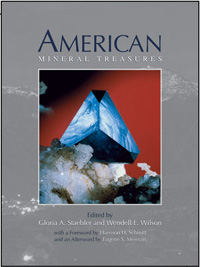
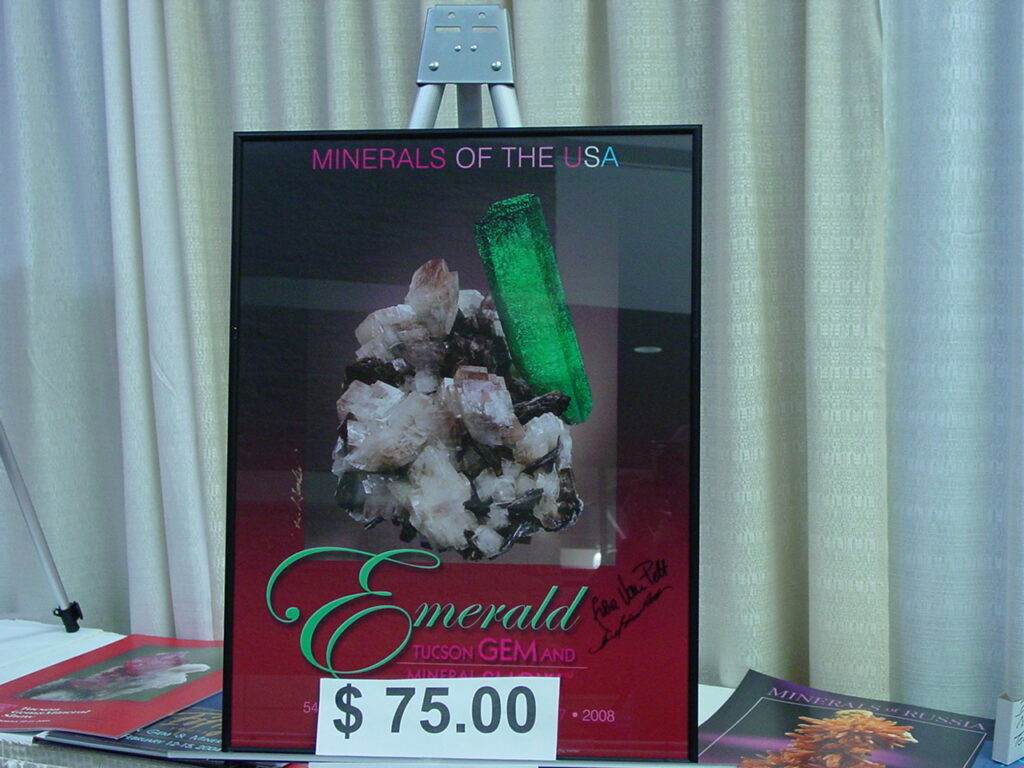
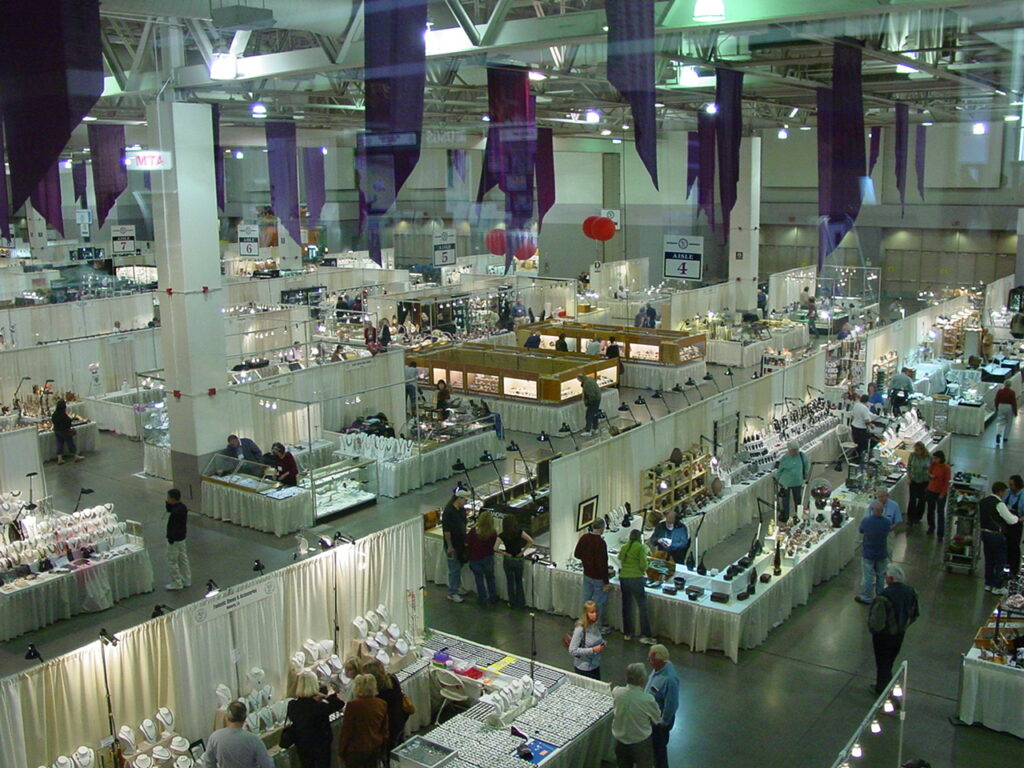
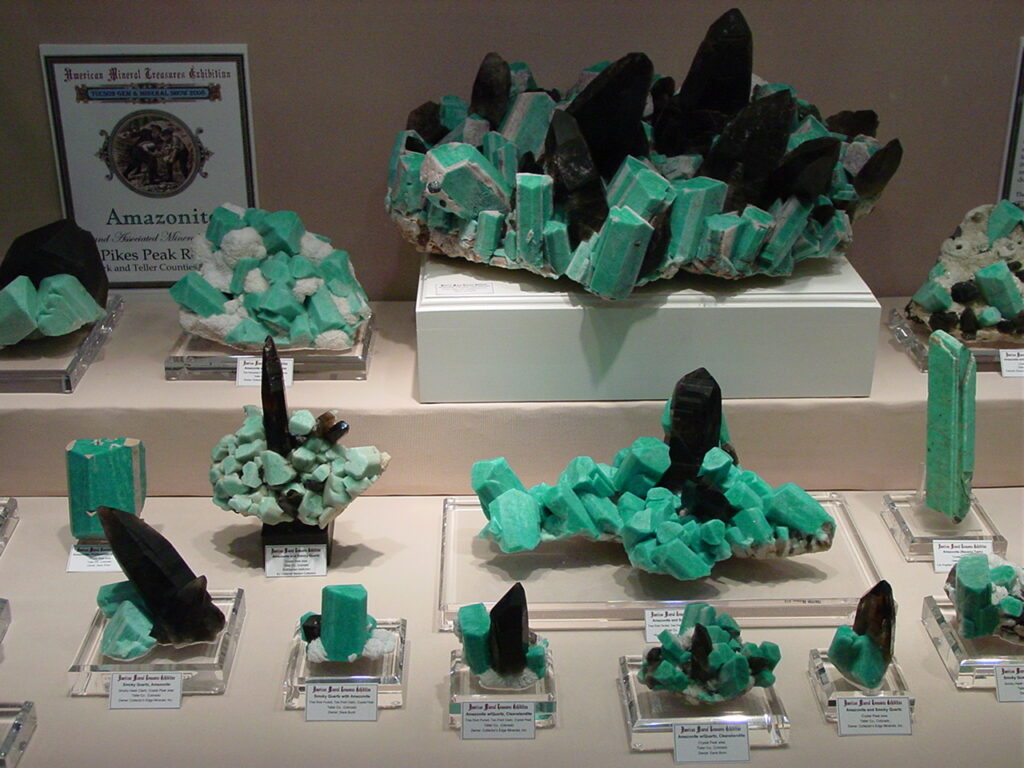
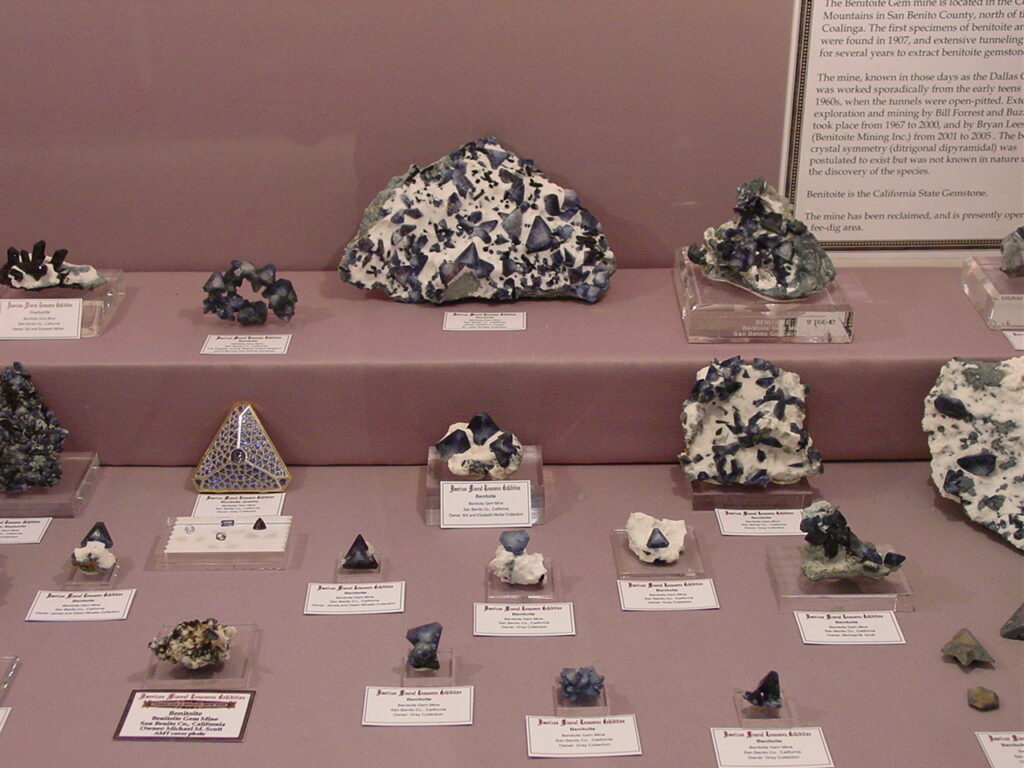
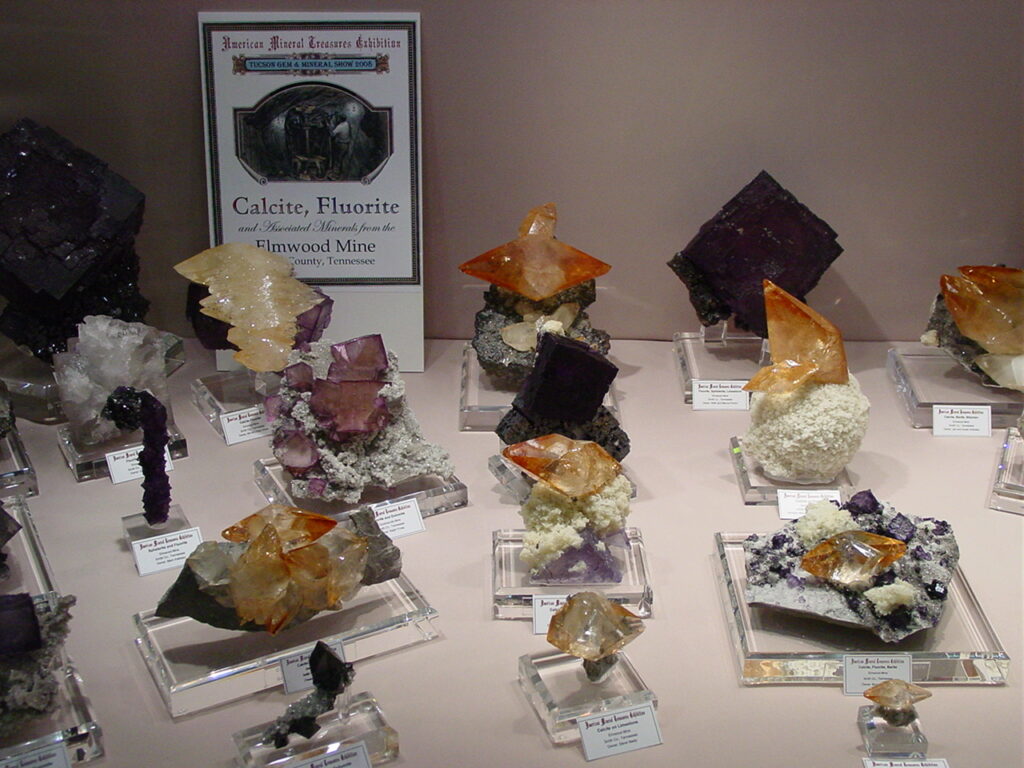
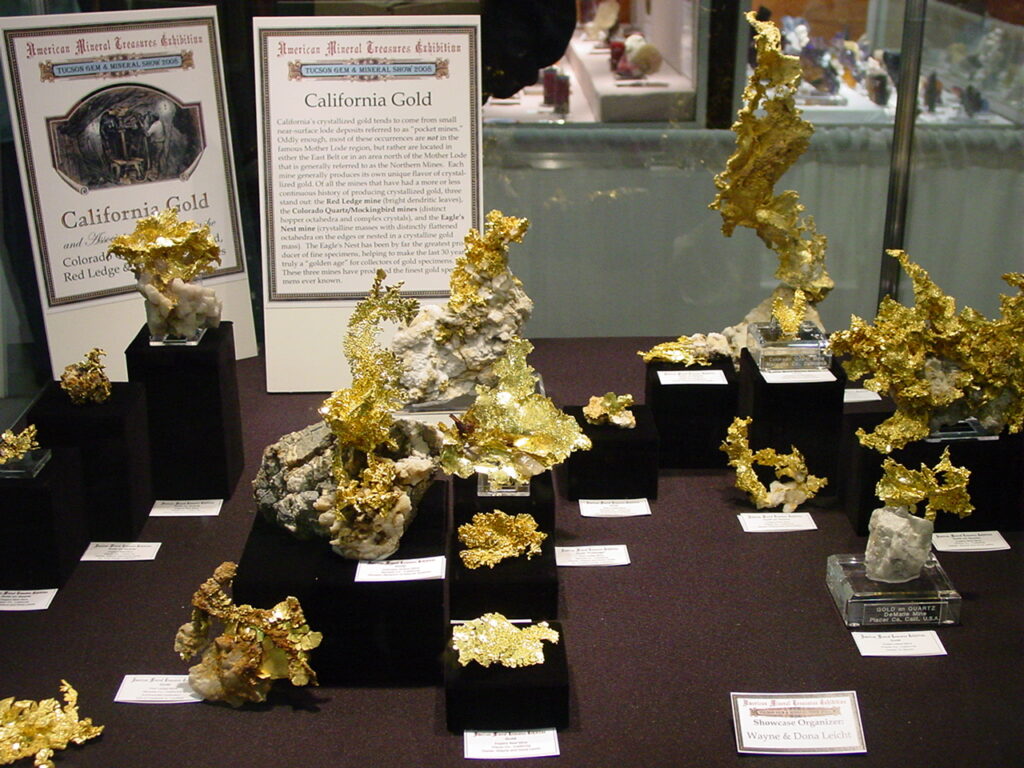
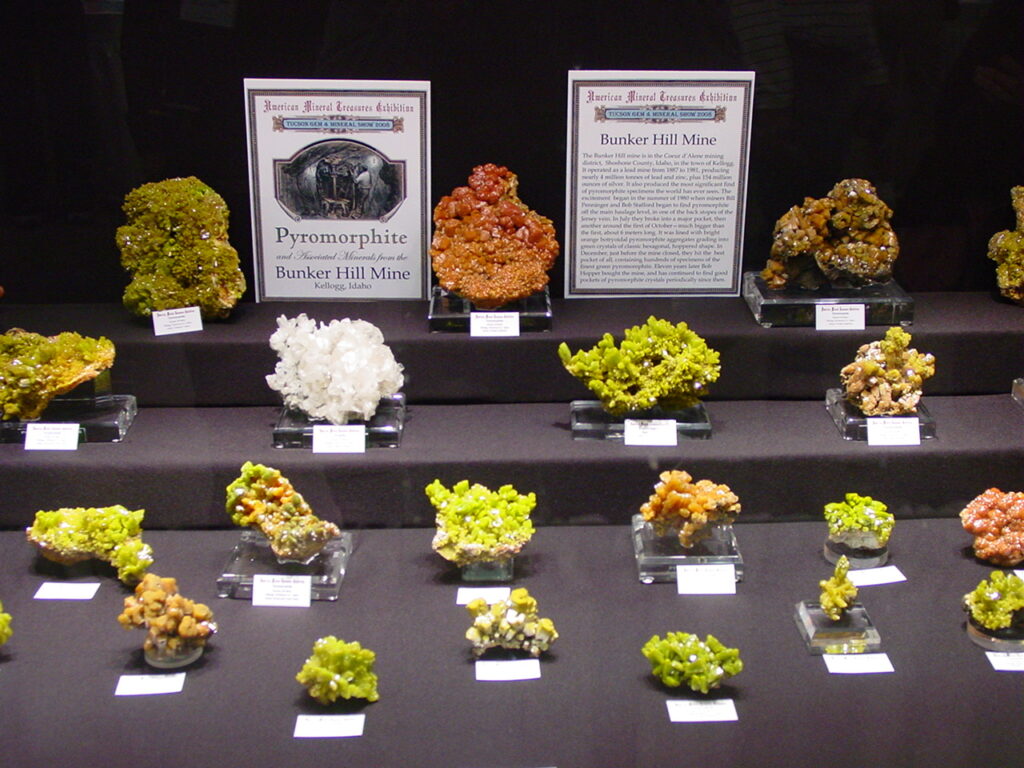
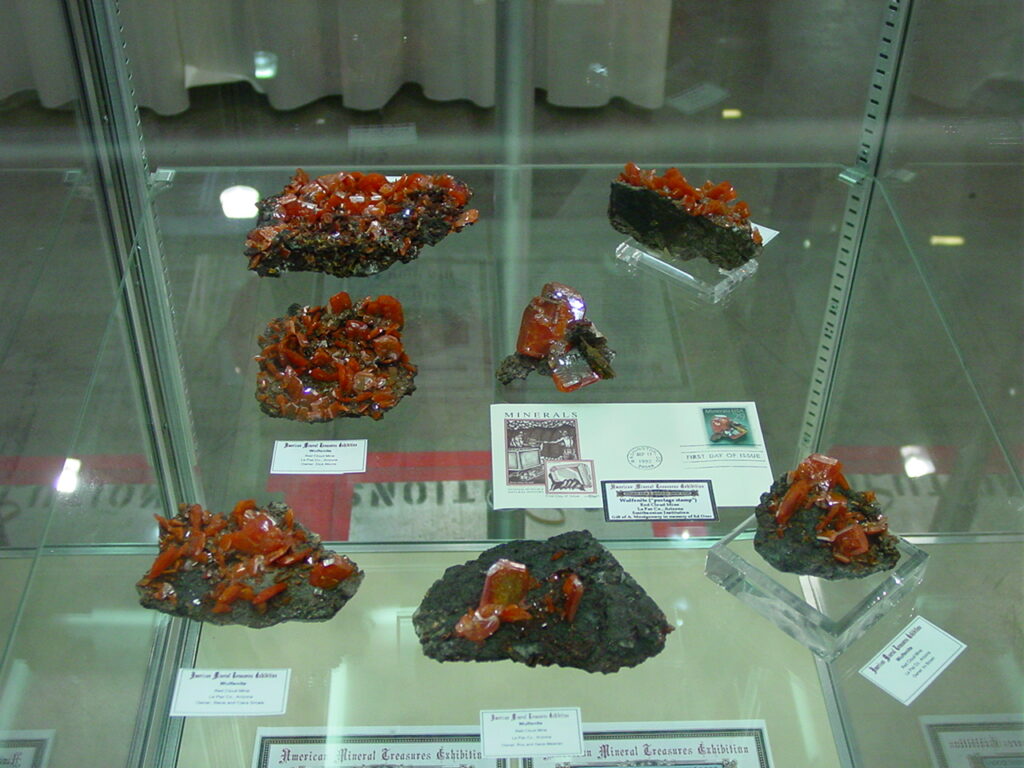
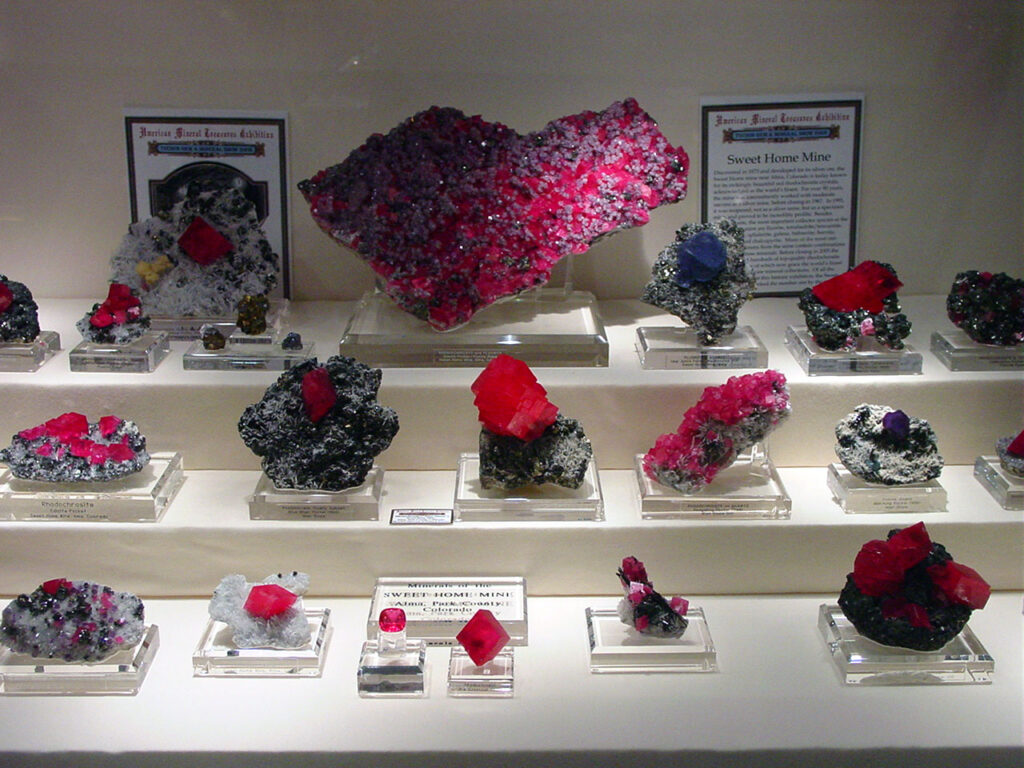
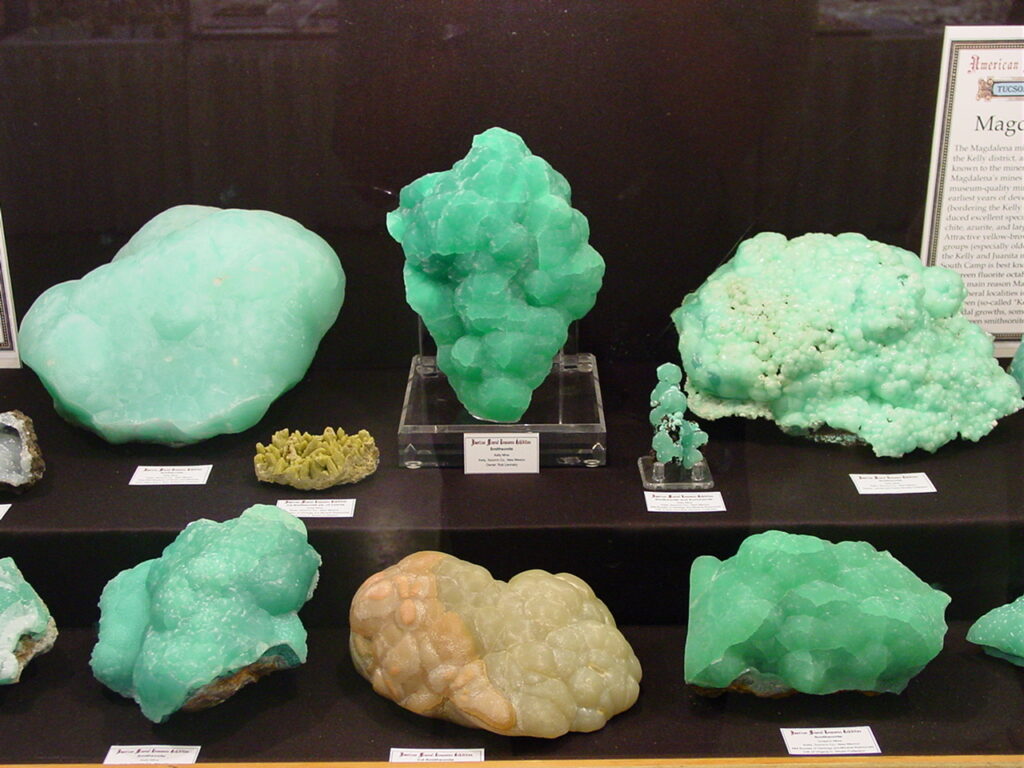
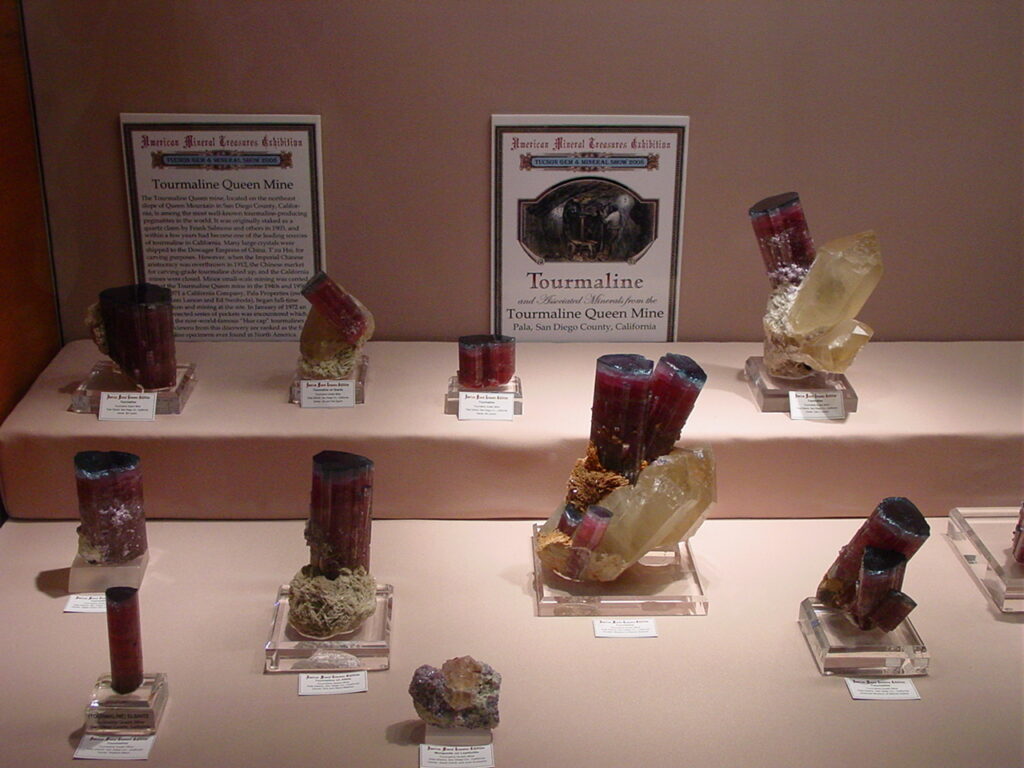
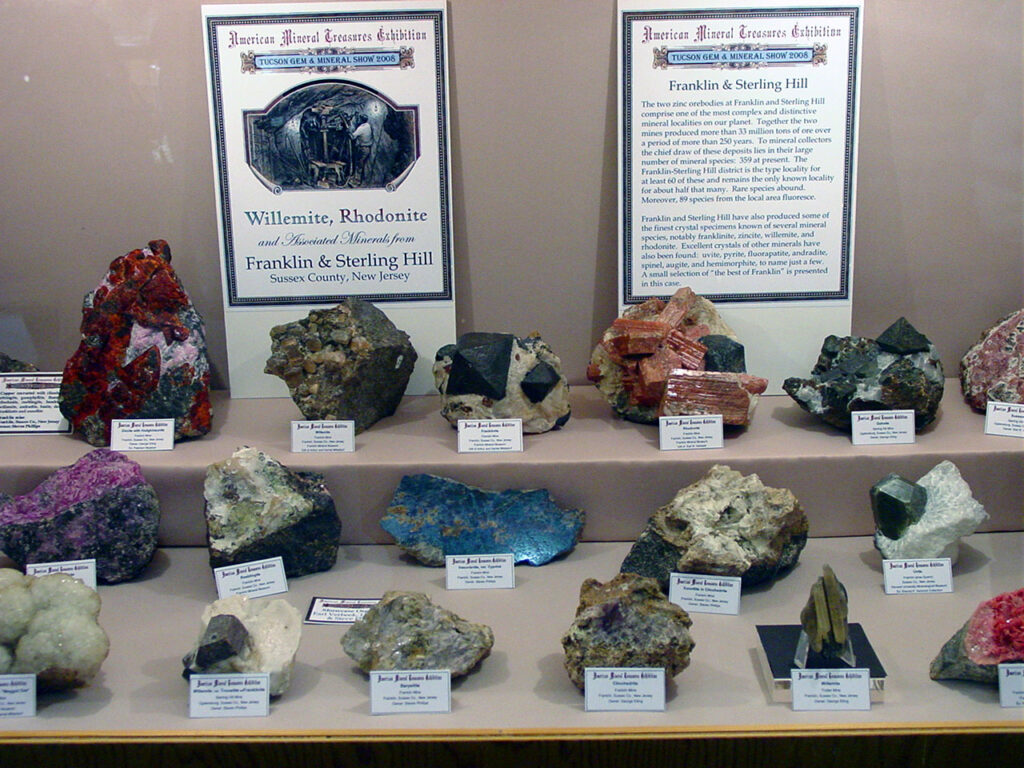
Fluorescent Mineral Display Case
As mentioned previously, this years Main show featured a new display case specifically designed to exhibit fluorescent minerals within the brightly lit Main hall. This case was set up next to the Franklin/Sterling Hill “American Mineral Treasure” case, but was actually a “Special Exhibit” case sponsored by the Sterling Hill Mining Museum. The mineral specimens displayed in the case were delivered to Tucson by Mr. Steve Phillips, the Franklin Mineral Museum President. The case design was extremely successful, and the specimens included were world class to say the least. As some of you may remember, it was in 1996 that the Fluorescent Mineral Society (FMS) put together the largest display ever of fluorescent minerals at the TGMS Main show. The TGMS, with permission from the local Tucson Fire Inspector, let the FMS use a large room (affectionately known now as the “Bat Cave”), located between the Main Hall and the Arena. The FMS display was unbelievable, containing 76 display cases with over 1,200 specimens on exhibit!! Heck, there was even a case with specimens from the George V. Polman collection, the first and only time I ever exhibited in public. The public response to this display was incredible, and I strongly believe the hobby has taken a quantum leap in popularity since (note the rise in specimen prices over the past 10 years due to supply and demand).
Anyway, it was nice to see our hobby so nicely on display at such a prestigious show as Tucson. Unfortunately, there has not really been any major display of fluorescent minerals at the Main show since. One possibility for this may have been TGMS fears of using the “Bat Cave” again due to the Fire Inspector’s concerns about safety in there. Needless to say, I was really excited to see this display this year. I appreciated the case so much, that I wanted to provide a brief history in order to give credit to all those who were responsible for putting it together.
Brief History and Credits for the Case.
Over the years, both Peter Megaw (Special/Guest Exhibits Chairman) and Richard Flagg (Exhibit Case Chair) wanted to have an impressive fluorescent mineral display as part of the Main show. For various reasons, this idea did not come to fruition. This year however, with the Franklin and Sterling Hill Mines being represented as part of the “American Mineral Treasures” display cases, Peter really could not see presenting Franklin/Sterling Hill without an impressive fluorescent mineral display. With this idea now as a catalyst, Peter decided to convert one of the two Scott Cases, donated to the TGMS by a local mineral collector, for use to display fluorescent minerals. The Scott Case was 7 feet tall, and appeared to be perfect for this application. Of course, it needed some redesign work since it was originally built as a white light display case.
While Richard Flagg gets full credit for the work necessary to convert the Scott Case, Dick Bostwick, Tema Hecht, Dr. Earl Verbeek and Don Newsome were all consulted on its redesign. Richard designed the lamp mounts and baffles and installed the ultraviolet lamps. Dick and Tema were available the week before the show to assist in the final detailing of the case, including painting the inside and the shelving brackets. The canopy, which proved to be invaluable, was designed and made by Arizona Cine, whose Floor Manager, Linda Oliver gave constant advice and assistance, even though she was quite busy with a multitude of other things! Arizona Cine is the company that sets up the show (drapes, tables, signs etc.). The canopy was installed by Dick and Richard. Peter convinced the TGMS to buy four UV Systems TripleBright shortwave lamps to be used in the case. In order to get Tucson Fire Inspector approval, Don (UV Systems) had to get the lamps approved by a nationally accredited testing laboratory.
The specimens were chosen by Dick, Tema and Earl, and represented specimens from the Dick Bostwick, Dr. Earl Verbeek and Sterling Hill Mining Museum collections. The labels were written and printed by Earl, and were really done nicely. As I stated earlier, the specimens were world class, and a joy to see! Special thanks to Dick for providing me information on the history of this case. Dick also mentioned that a special “thanks” needs to go out to Richard Flagg. Richard is 85 years young, and over the years has built nearly all the cases used at the show!! With his help and his moral support, Dick knew this project was going to be a success!
My personal thanks and congratulations to all those mentioned above for a job well done! I thoroughly enjoyed the display, and I hope that it becomes a regular addition to the Main Show. I think it will continue to boost the popularity of the fluorescent mineral hobby if it does. Below are some pictures I took of the display case and some of the specimens. Looking back now, I wish I was feeling better, and could have taken the time to photograph every specimen in the case. Anyway, I hope you enjoy the photographs I did manage to take.
